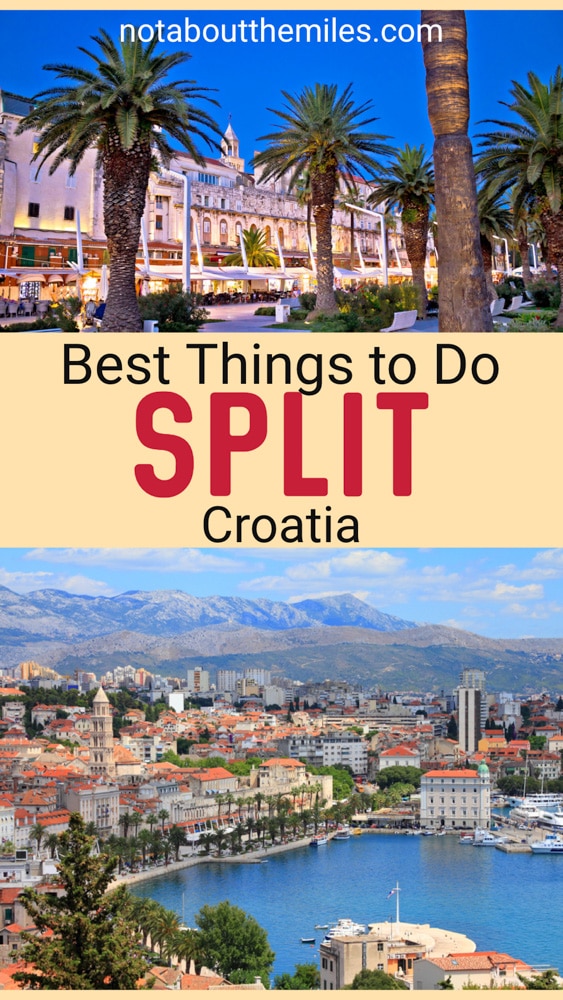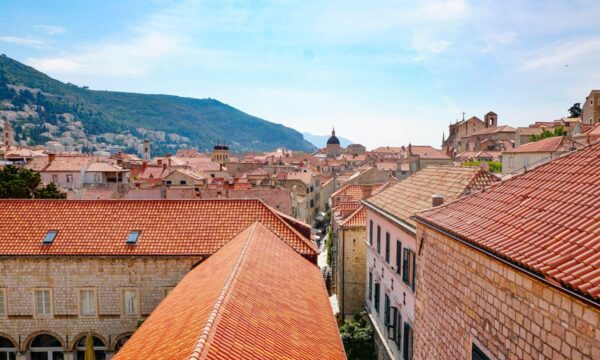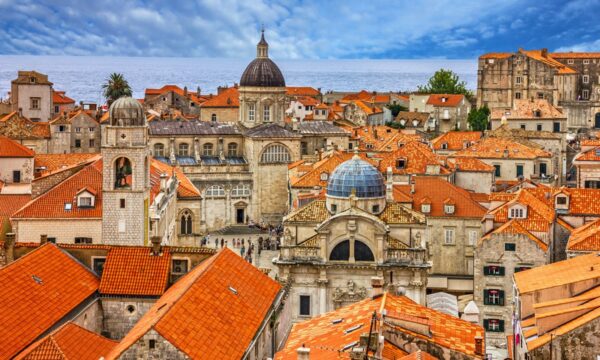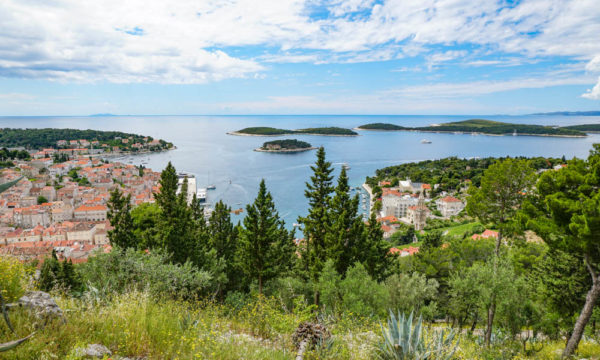Planning a trip to Split, Croatia, and looking for the best things to do in Split?
Centrally located on Croatia’s Dalmatian coast, Split has a must-visit historic center. While there are many fun things to do in Split that make it a splendid destination in its own right, it also makes an excellent base for day trips to explore more of Croatia.
Split has a long history, dating back to Greek and then Roman times. Most famously, it was the place that Roman emperor Diocletian chose to have a palace built for his retirement.
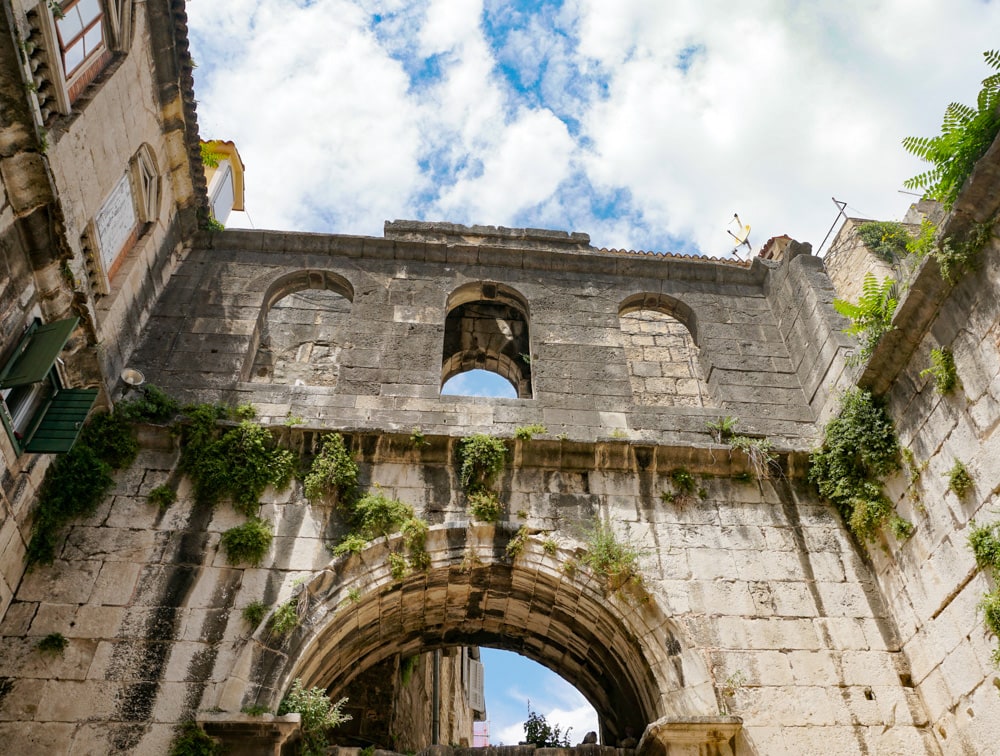
Some links on this page may be affiliate links. If you click an affiliate link and make a purchase, we may receive a small commission, at no extra cost to you. For more details, refer to our disclosure.
With beautiful architecture and a rich history, many museums and galleries, a vibrant waterfront, and excellent food and drink, Split is well worth visiting on a Croatia trip. It is an integral part of our ultimate 10-day Croatia itinerary for first-timers.
Considering a visit to this exciting Croatian city? Read on for the best things to do in Split, from exploring Diocletian’s Palace to visiting Klis Fortress, which featured in Game of Thrones.
TABLE OF CONTENTS
Things to Do in Split
The Best Split Day Trip Ideas
Getting to Split, Croatia
Getting Around in Split
Where to Stay in Split
Where to Eat in Split
The Best Time to Visit Split
The Best Things to Do in Split
1. Wander Diocletian’s Palace
Wandering the alleys of Diocletian’s Palace is one of the best things to do in Split. The palace isn’t just one building but an entire complex built for the “retirement” of Roman emperor Diocletian.
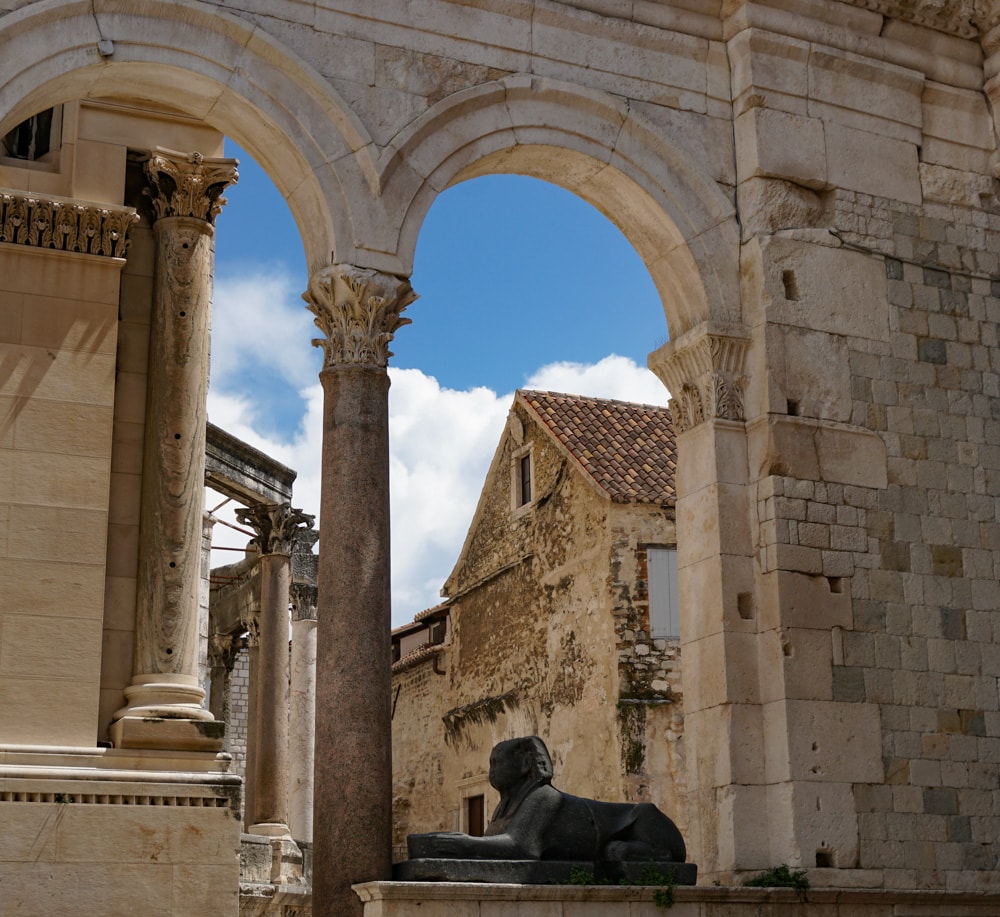
A UNESCO World Heritage Site, Diocletian’s Palace houses historic landmarks, plus shops, restaurants and cafes, and hotels. About 3,000 people actually live in Diocletian’s Palace!
There are four gates into the palace, one from each direction. Other than the side that faces the sea, the palace was surrounded by fortified walls.
The Golden Gate, today the main entrance to Diocletian’s Palace, was the entrance reportedly used by Diocletian when he first entered the palace.
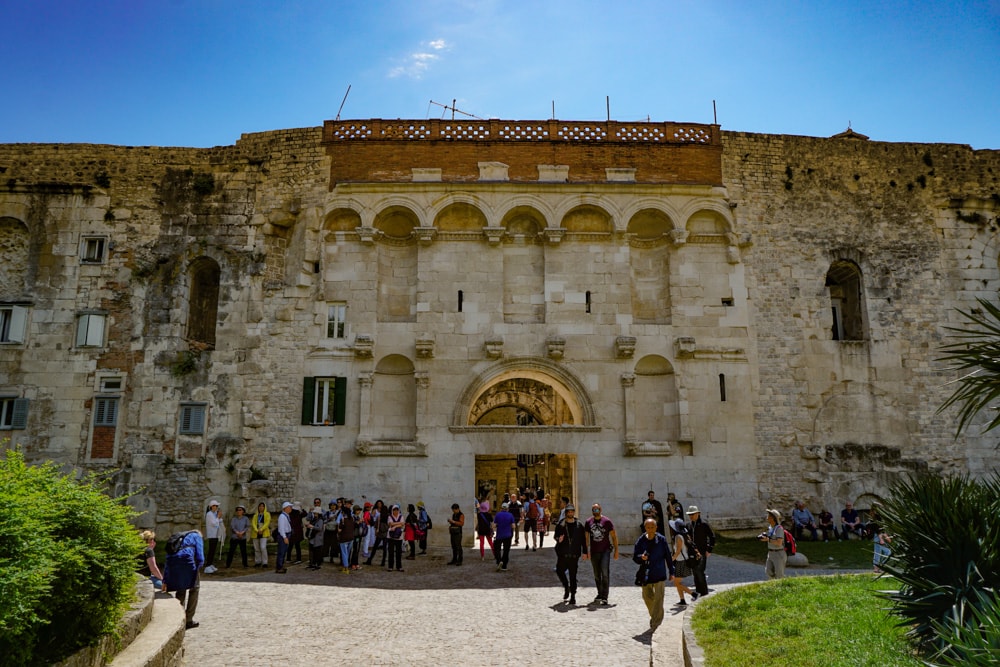
If you visit in season, you may see locals dressed up as legionaries, at the Golden Gate or in other parts of the complex.
A walking tour is a great way to learn about the history and architecture as you walk! This highly-rated tour is led by a local historian that speaks fluent English and lasts a little under 2 hours.
Book this tour now!
Built of white limestone and marble brought from quarries on the island of Brač, many parts of the palace complex are well preserved.
Other than visiting the main points of interest in the palace, walk around the Old Town to admire the architecture and savor the ambience.
A local took us to a shop in the palace complex, where a part of the original floor is still preserved. It was very cool!
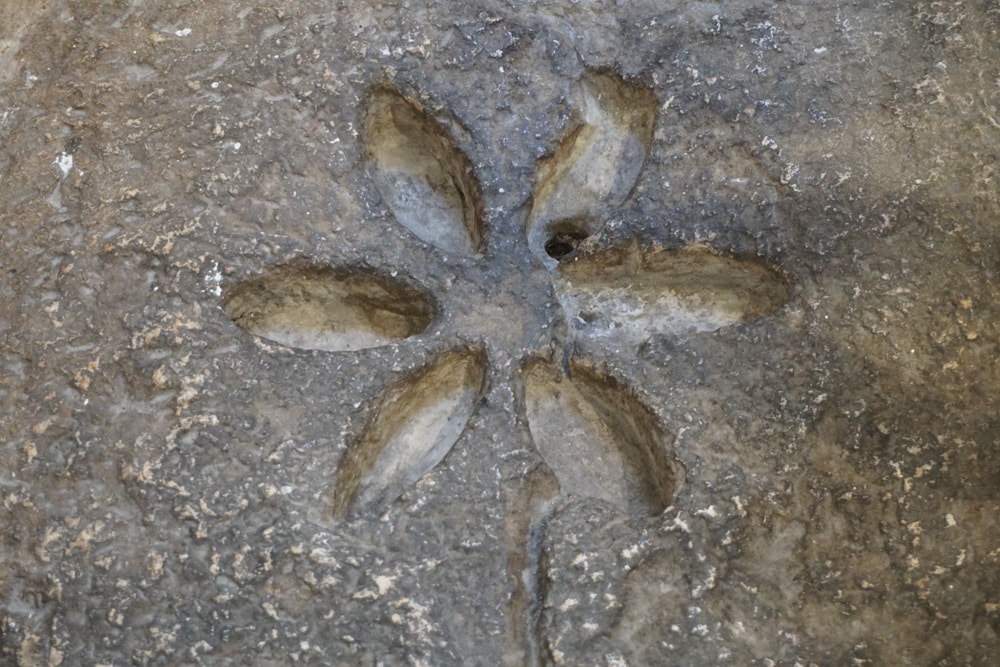
2. Visit the Split Cathedral
The Cathedral of Saint Domnius is one of the main landmarks to see within Diocletian’s Palace. Locals call it Sveti Duje.
The structure is actually formed from the mausoleum of the Emperor Diocletian, built in the year 305 A.D.
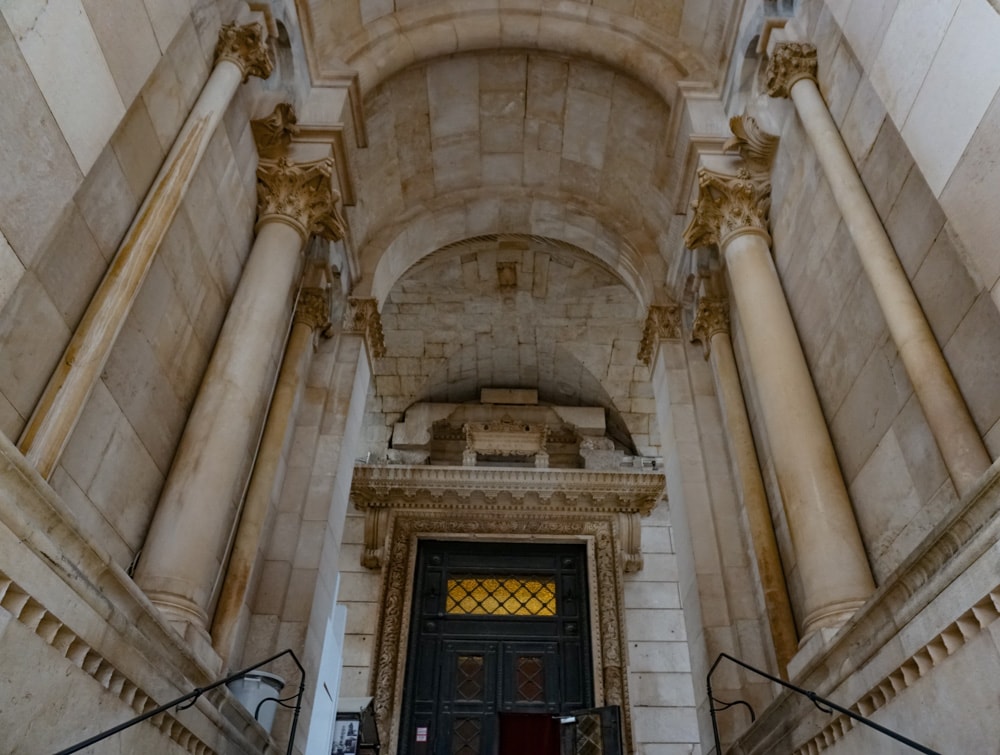
The cathedral is said to be the oldest Catholic cathedral still in use in its original structure. The bell tower is much newer: it was built in the 12th century.
Observe the beautiful wood doors of the cathedral: they are from the early 13th century and depict scenes from the life of Christ.
Also don’t miss the beautiful black sphinx between the columns near the cathedral. The sphinx was brought here from Luxor in Egypt and dates back to the time of Pharaoh Thutmose III: it is over 3,000 years old!
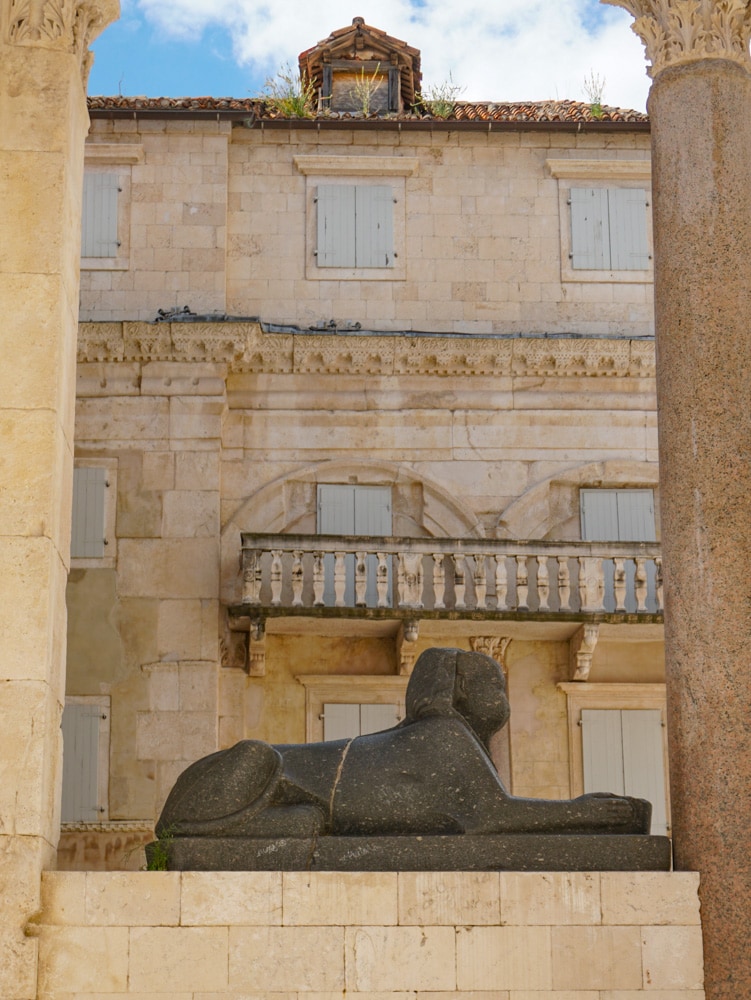
The Treasury holds the relics of Saint Domnius and many sacred objects such as chalices and reliquaries.
3. Take in the views from the Top of the bell Tower
There are 200 (steep!) steps to the top of the bell tower of the Split Cathedral. The climb is tight in places, but the 360-degree views from the top are panoramic.
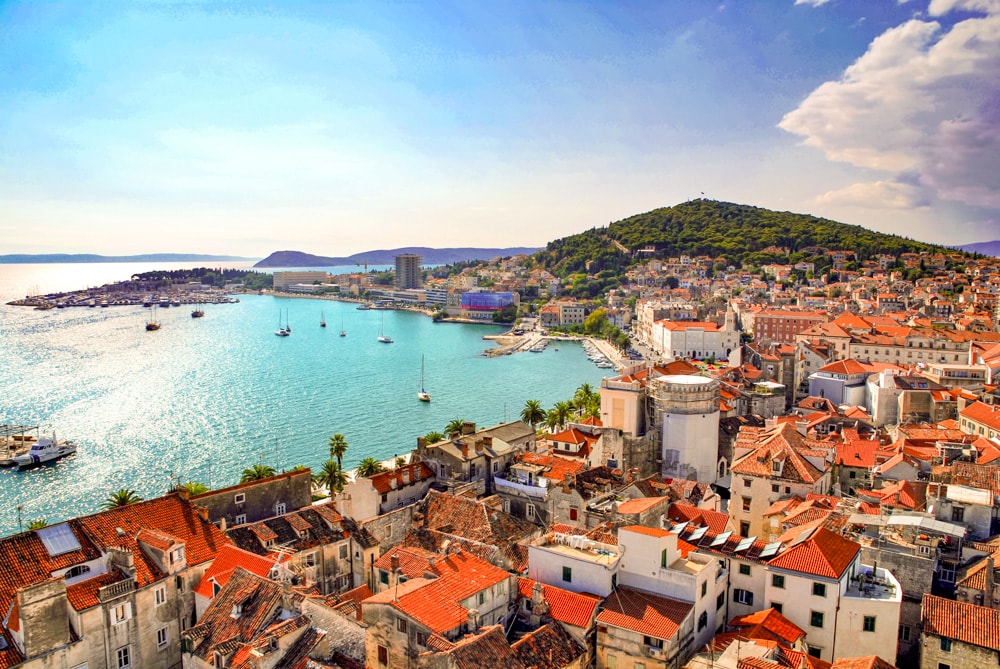
You’ll see the rooftops of the city spread out below you, Marjan Hill rising up above the rooftops, and the Adriatic Sea.
On a bright clear day, the views are gorgeous and worth the effort!
There are windows along the way, so you can savor some views even if you decide you can’t make it to the top.
The bell tower is 60m (about 198 feet) high, and a signature landmark in Split. Look for it when you are on a boat out on the water!
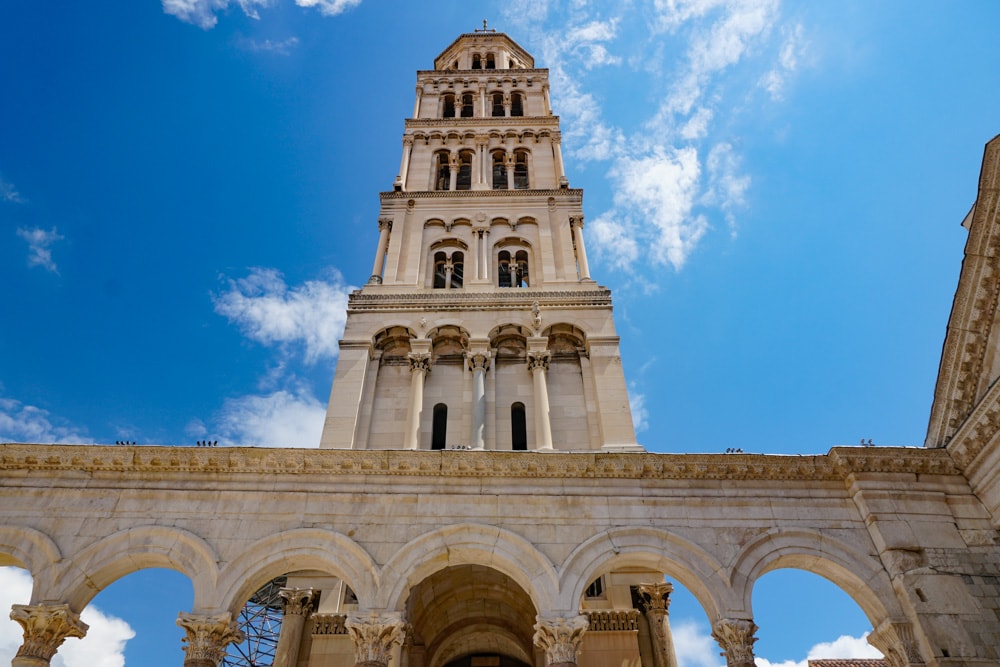
It was built in the Romanesque style in the year 1,100 A.D. but many Romanesque elements were removed when it was modified in the early 20th century.
4. Sit for a bit in the Peristyle
We thought the colonnaded Peristyle was the most stunning part of Diocletian’s Palace. It’s an excellent spot for photos and looks wonderful both by day and lit up at night.
The structure is made of beautiful white limestone from Brac, while the columns are marble and Egyptian siennite.
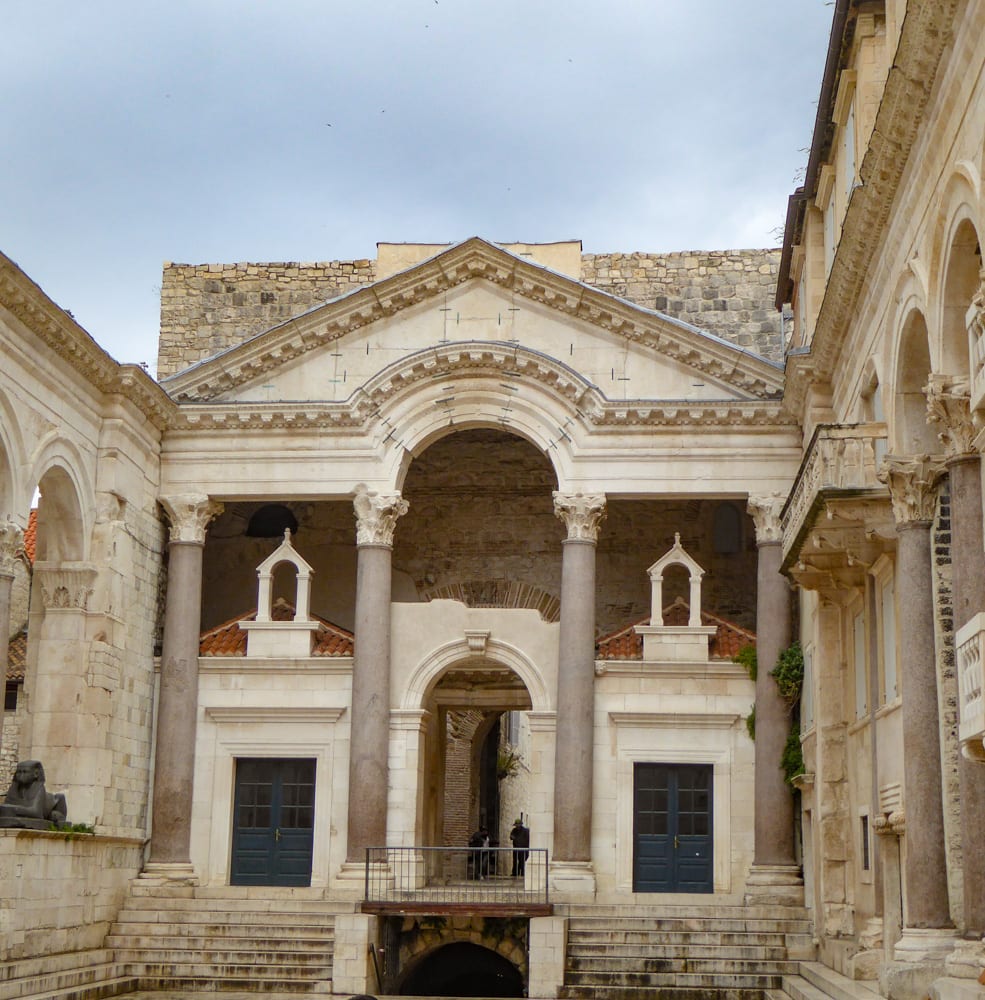
Many significant parts of Diocletian’s Palace are located around the Peristyle, and it’s a venue for opera performances during the Split Summer Festival.
The court opens out in front of the cathedral, and it is lovely to sit on the steps with your morning coffee and savor the sense of history early in the day, when it’s quiet. Later, the square gets lively, making it a great place to people watch.
The Emperor’s apartments opened out on to the prothyron in the Peristyle, and it’s from here that Emperor Diocletian gave audience to his subjects.
On the east side of the Peristyle, you will also see the little Chapel of St. Roch, which is a Renaissance-style structure from the 16th century. It now houses the tourist information center.
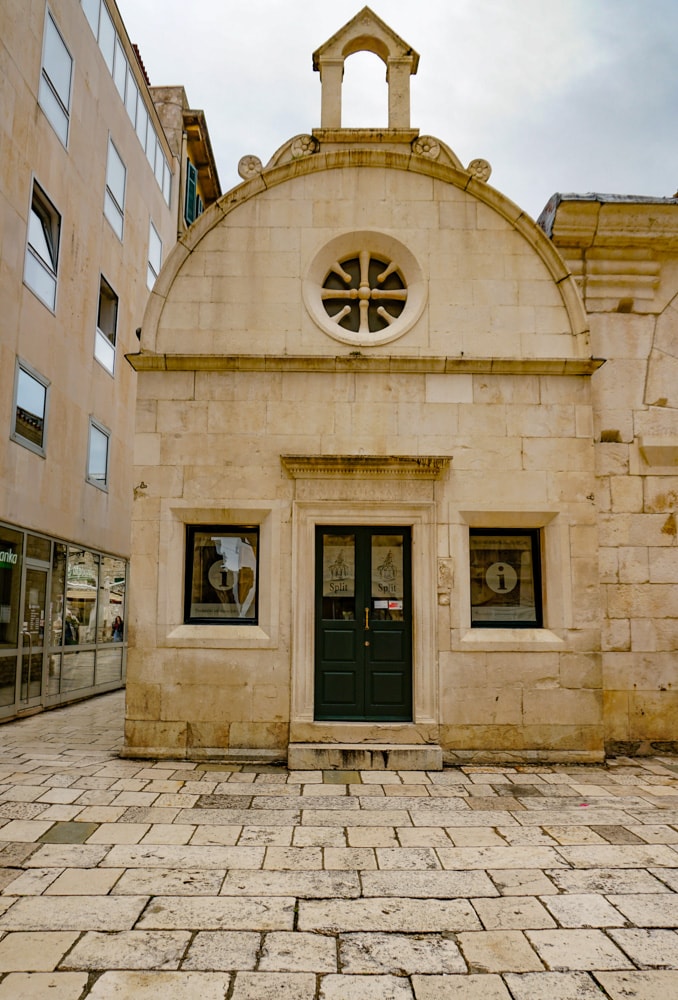
5. View the Vestibule
Right behind the prothyron of the Peristyle is the Vestibule, which leads to the imperial residential quarters. The vestibule is circular and once the interior walls were marble, but today you’ll see exposed brick.
The Vestibule has an oculus, similar to the Pantheon in Rome, and opens to the sky. It has excellent acoustics and local singers used to give a capella performances here, but sadly, not any more.
6. Snap a photo of the Jupiter Temple
To the west of the Peristyle, there were three temples built during Diocletian’s time, but only one survives: the Temple of Jupiter. Look for the black headless sphinx in front of the temple, it’s one of the ancient sphinxes the Romans got from Egypt.
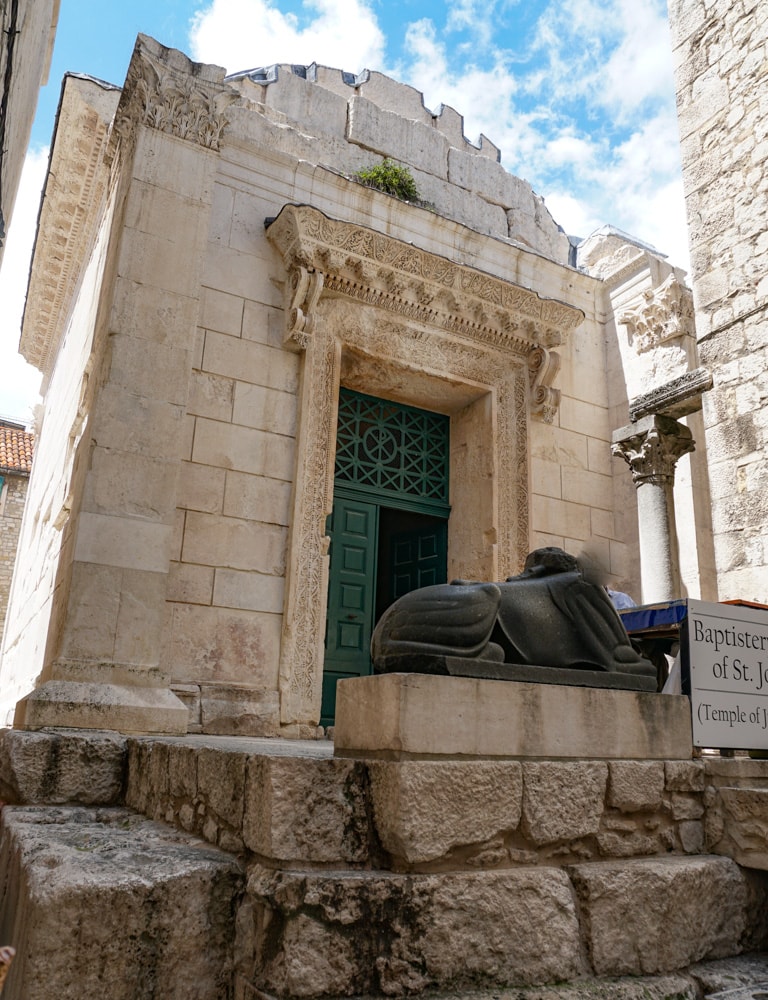
Just as Diocletian’s mausoleum was later converted to a cathedral, the Temple of Jupiter became the baptistery. The temple is small but it has a beautiful decorated barrel vault ceiling.
The bronze statue of St. John the Baptist is by Ivan Meštrović, the renowned Croatian sculptor. The baptismal font is made from stone slabs (some carved) from the 13th century.
7. Explore the Cellars of Diocletian’s Palace
The cellars of Diocletian’s Palace are large! In fact, the cellars here are one of the largest and best preserved such substructures in the world.
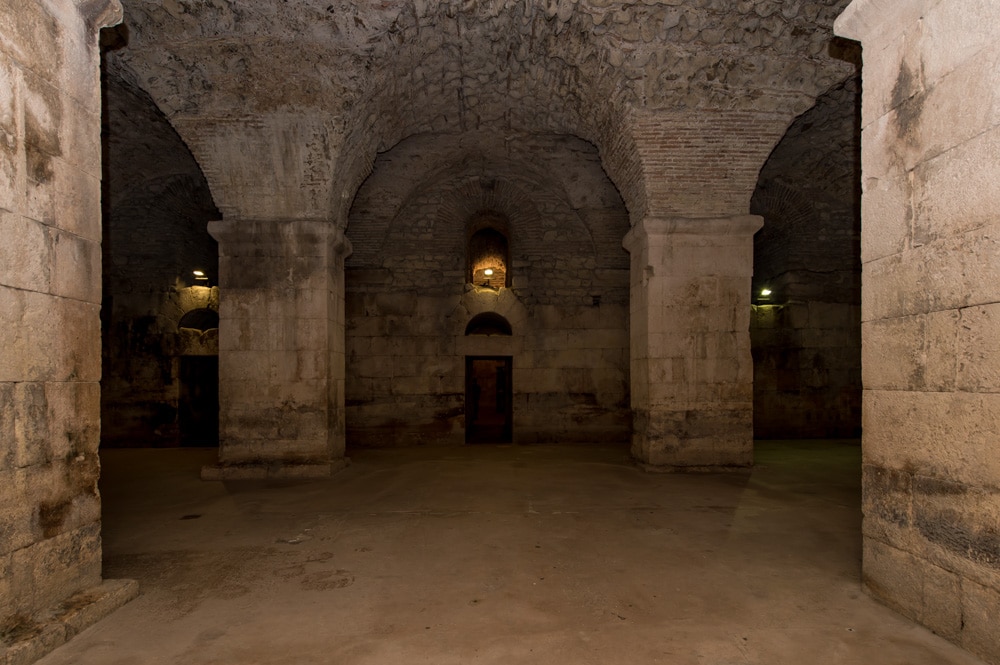
In Diocletian’s time, the cellars were used for wine storage. The cellars were restored in the mid 19th centuru, making it possible to tour them today.
Since the cellars are located directly below the imperial apartments (since destroyed), they give you an idea of the size and layout of the emperor’s quarters.
The underground level also houses the baths of Diocletian (he also built baths in Rome!) They are quite well preserved.
If you are a Game of Thrones fan, you’ll want to tour the cellars! The cellars feature as Daenerys Targaryen’s throne room in seasons 4 and 5. Here’s where she kept her dragons!
Check out this highly-rated guided tour of Game of Thrones filming locations in town that were transformed into Meereen on the show. The 90-minute tour offers fascinating insights as you walk the Old Town and tour the cellars.
Book this tour now!
8. Enjoy people watching at Narodni Trg
We stayed at the Judita Palace Heritage Hotel in Split, which is right on Narodni Trg, the People’s Square in Split. Locals calls the square Pjaca.
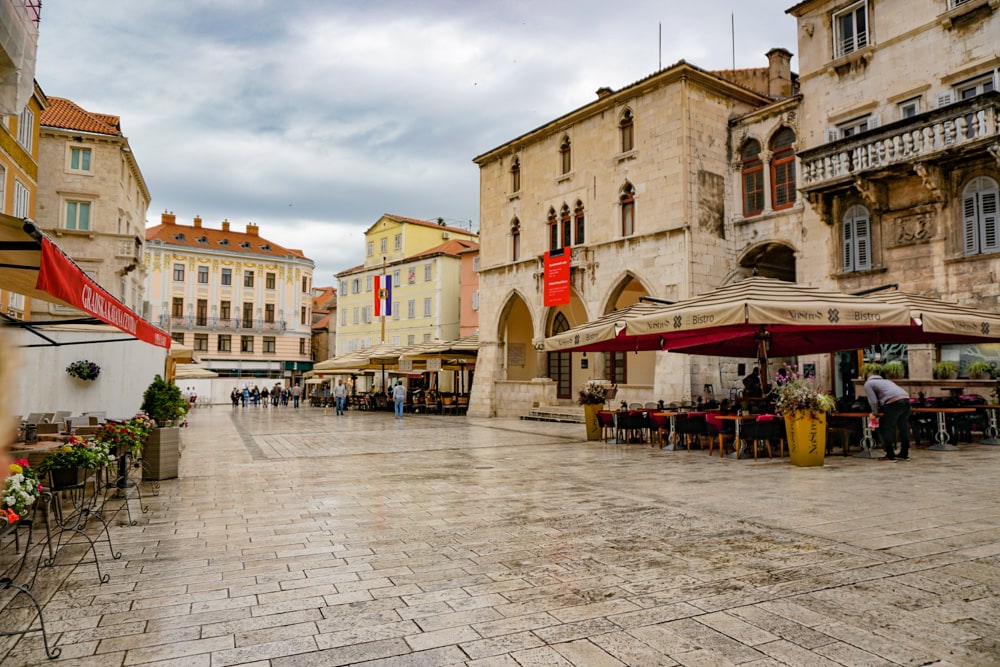
Pjaca, referenced as St. Lawrence Square in the 13th century, was the first place to be inhabited outside the walls of Diocletian’s Palace in Split.
Admire the 15th century Gothic Town Hall, today a venue for art exhibitions, and the picturesque Romanesque clock tower. Snap photos of the beautiful palaces: the Art Nouveau Nakic Palace, the Ciprianis-Benedetti Palace, and many more.
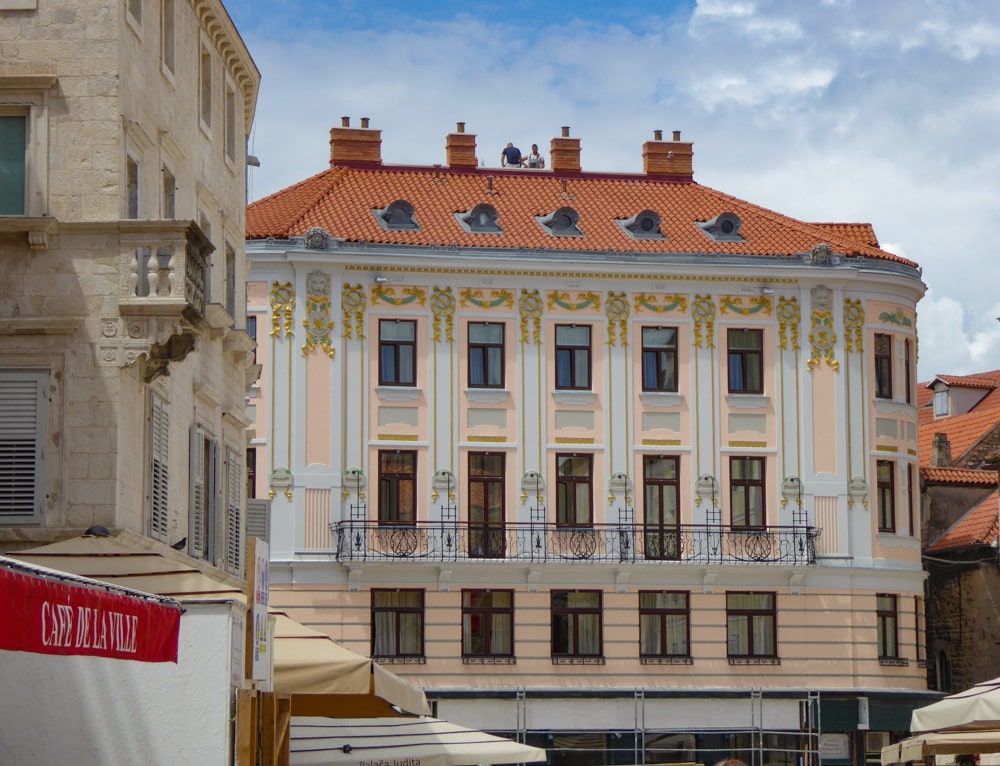
The square is lined with shops, cafes, and restaurants, so it’s a great place to hang out with a drink and people watch.
9. Visit the Pazar Green Market
One of the most fun things we did in various places in Croatia was strolling the local markets. They are generally held outdoors in the summer, and feature colorful produce, fresh flowers, and other foods.

Split’s Pazar Green Market is located along Hrvojeva Street, east of Diocletian’s Palace. It starts just outside the Silver Gate.
The open air market offers a variety of fruit and vegetables, and is a great place to pick up some seasonal produce if you plan to stay in an apartment. You can also try prepared foods, such as the soparnik, a pie with a filling of cooked chard.
We stopped by each morning while we were in Split, to get fresh fruit to eat during the day. We found luscious cherries, raspberries, and more!
The market opens at 7 a.m. and shuts down at 2 p.m.
Good to know: The fish market, Ribarnica, is just a 5-minute walk from the Green Market, if you plan to cook during your stay in Split. You’ll find really fresh seafood, and the market is open-air in the summer.
10. Stroll the Riva, the Waterfront Promenade
Split is located right on the Adriatic Sea, and its waterfront promenade makes for a wonderful stroll. Lined with stunning palm trees, the Riva runs alongside Diocletian’s Palace.
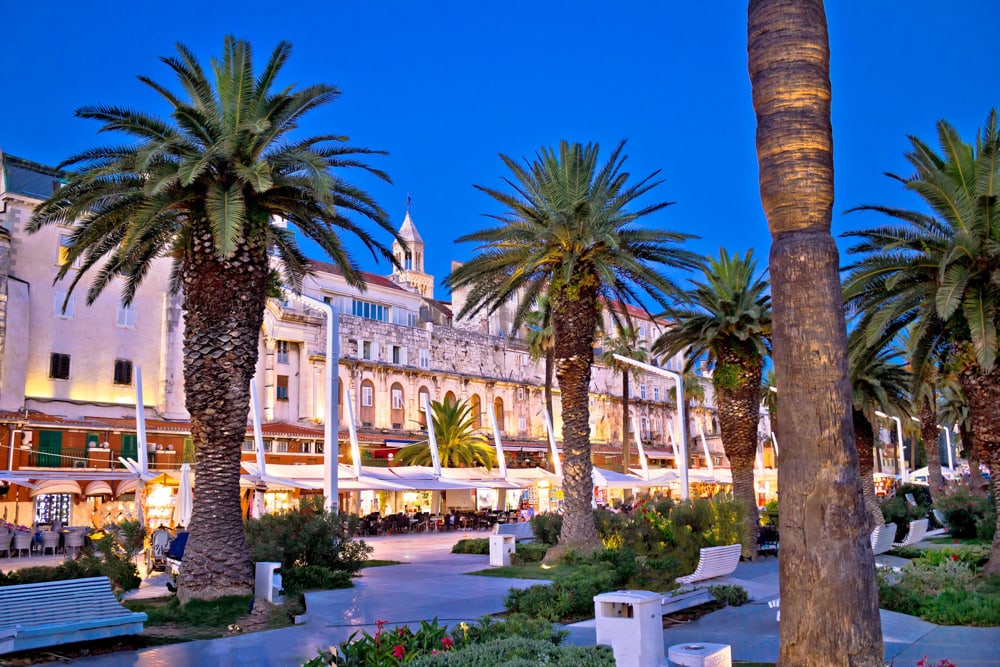
There are many restaurants and cafes on the Riva, and although we do not recommend eating here (the food is geared towards tourists), enjoying a drink as you take in the views is a delightful Split activity: you’ll see many locals doing it too!
You’ll find bakeries and ice cream shops here, if you feel like a sweet treat, and souvenir stalls.
If you stroll the Riva early in the day, you’ll have it pretty much to yourself! But in the day and into the evening, the promenade gets busy. There are shaded benches if you just want to sit and enjoy the view of the water.
As you face the water, the Split marina is on the right. Stroll over and view the beautiful boats, or watch the sun set!
11. Enjoy the Views from Marjan Hill
Marjan Hill is a pine-covered hill to the west of Split. The hill is 178m (about 584 feet) tall, and offers panoramic views of Split. It’s also a nice green space that offers a contrast to the Old Town.
Taking in the panoramas from the viewpoints on Marjan Hill is one of the best things to do in Split. You don’t even need to walk too far up to get stunning photos of Split from the first viewpoint.
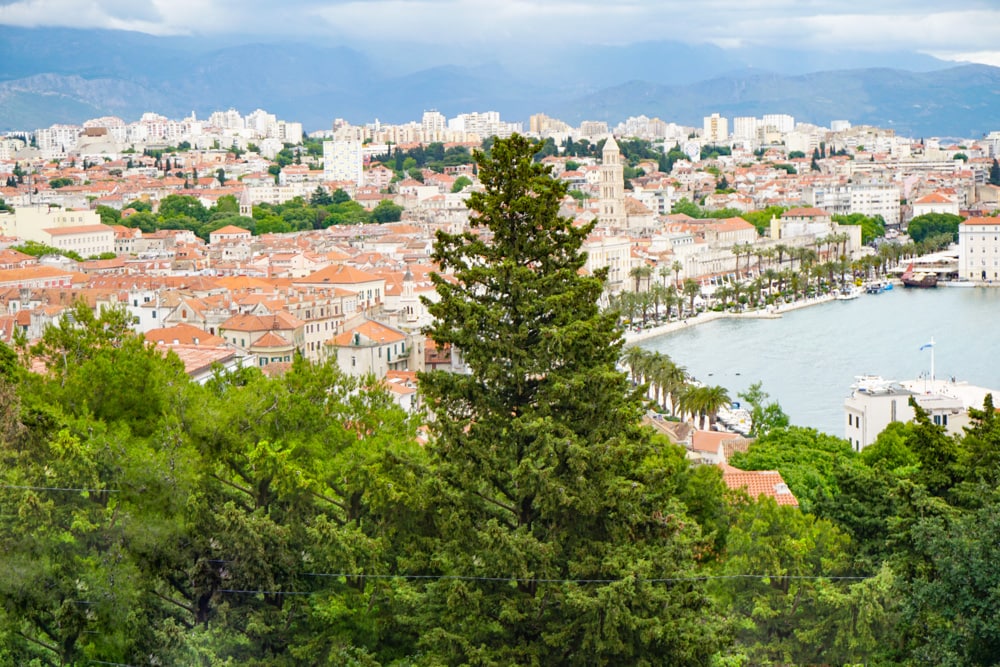
Walk west along the Riva of Split, past the Republic Square, and keep your eyes peeled for a set of stairs, marked with a sign saying “Marjan Hill.” (see map)
Walk up the stairs to the first viewpoint, located just outside Teraca Vidilica. You can snap photos from the viewpoint and then enjoy the views as you sit with a drink at the cafe.
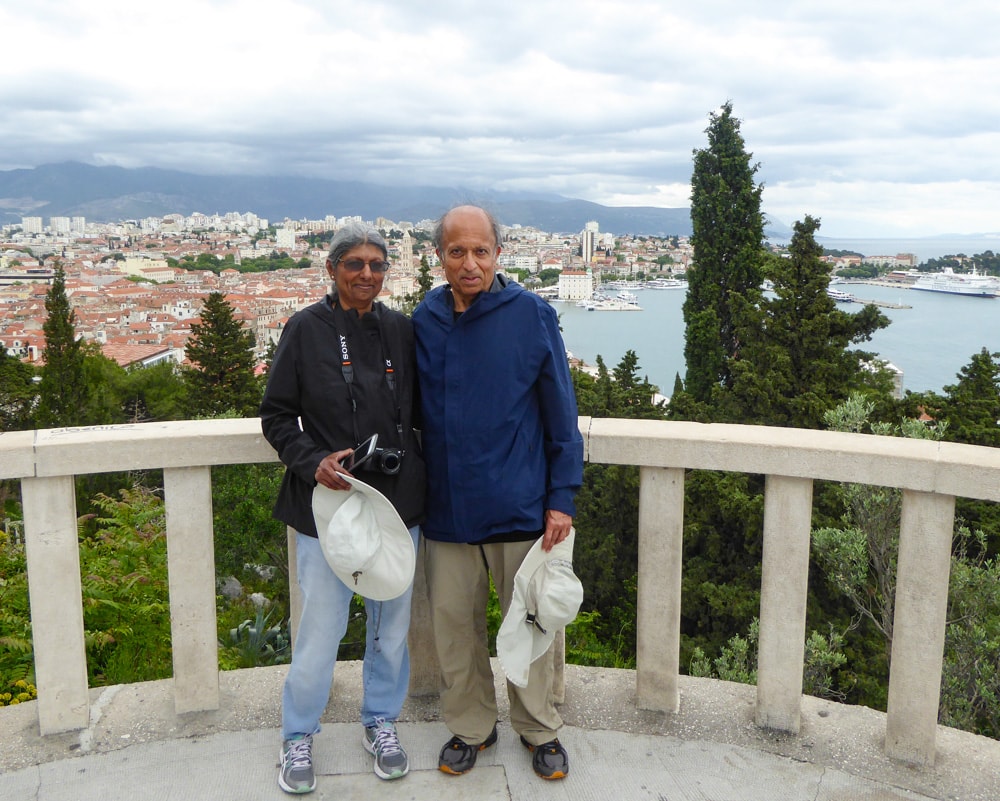
The views of the Old Town and the Adriatic Sea from the viewpoint are spectacular, especially if you visit on a bright clear day.
If you like, you can walk further up the hill to the very top, for more views. But we think the best views are from the first viewpoint.
12. Hike or Bike Marjan Hill
Marjan Hill has functioned as a park right since the times of Diocletian. In modern times, Marjan, considered the lungs of Split, is protected as a park.
If you plan to spend a few days in Split and are looking for outdoor activities to intersperse with your sightseeing, Marjan Hill offers hiking and biking paths.
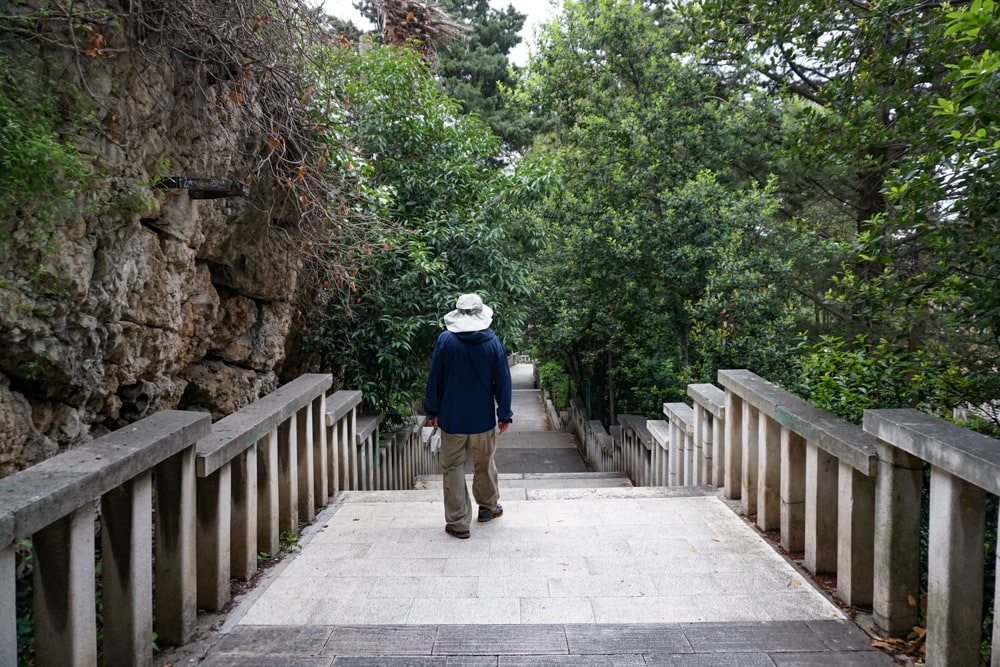
Locals use the park for exercise as well as picnics. On good weather days, Marjan Hill is an excellent spot from which to enjoy stunning views of Split, both the city and the harbor. There are benches to sit and appreciate the views.
The highest point on the hill is called Telegrin, and you have to climb 314 steps to get to the point. There is also a hill path that runs around the perimeter of Marjan, which you can hike or mountain bike.
Go early or late in the summer, and carry drinking water and snacks.
13. Visit the Mestrovic Gallery
Ivan Meštrović is a renowned 20th century Croatian sculptor. He carved the magnificent statue of Grgur Ninski you see outside the Golden Gate of Diocletian’s Palace, and also the statue of St. John in the former Temple of Jupiter.
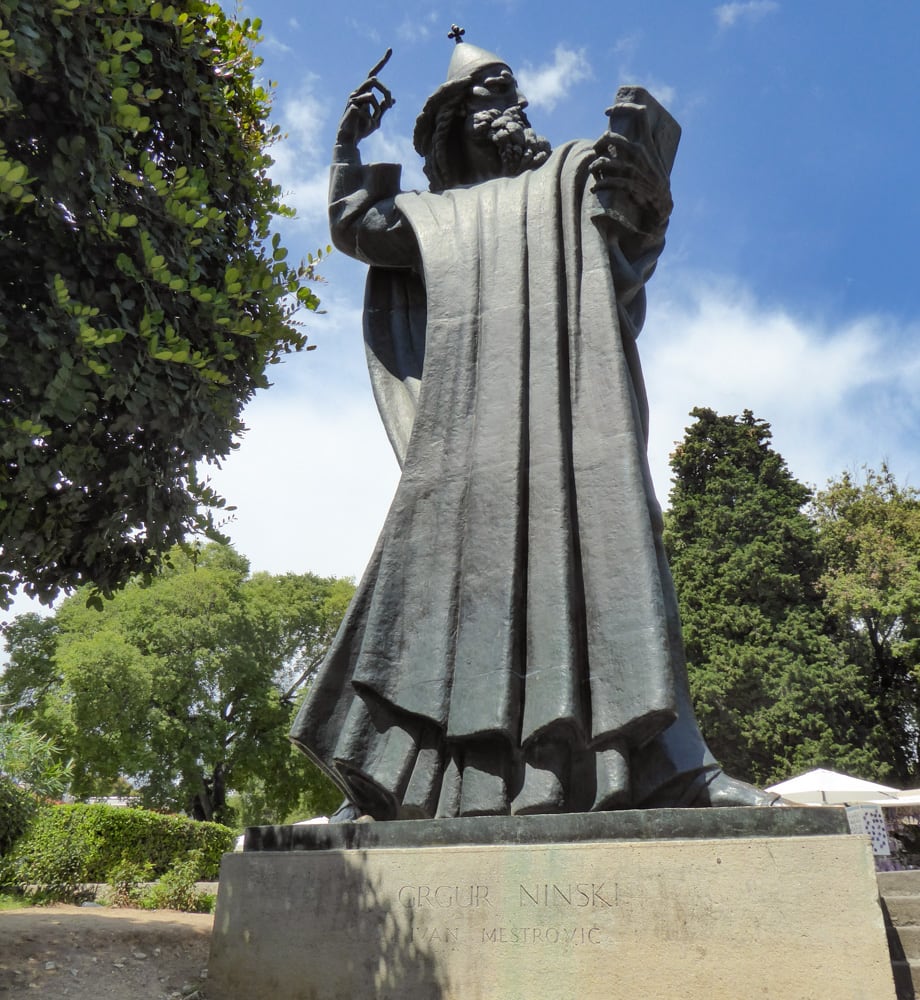
The museum is housed in Mestrovic’s villa on the Marjan peninsula, and the villa itself, designed by Mestrovic, is worthy of your time if you enjoy history and architecture.
In 1952, Mestrovic donated the property, along with some of his works of art, to the state, and the Mestrovic Gallery came into being.
Today the gallery has a collection of close to 200 Mestrovic sculptures, in marble, wood, and bronze, along with drawings and paintings and some furniture. There is an outdoor sculpture gallery, and indoor exhibits that span two floors.
Don’t miss Kaštelet-Crikvine, a restored chapel near the gallery that houses gorgeous wood wall panels carved by Mestrovic.
As a bonus, the garden is lovely and the views are amazing!
14. Rub the toe of the Nin statue!
The massive statue of Grgur Ninski stands just outside the Golden Gate to Diocletian’s Palace. Gregory of Nin, a medieval bishop, is famous for his dim view of the official church and the the pope.
Grigur Ninski began offering religious services in the Croatian language rather than Latin, to make them easier for people to understand.
Rubbing the toe of the statue of Nin is said to bring good luck. As a result of the constant rubbing, you’ll see that the toe is shiny, as compared to the rest of the statue!
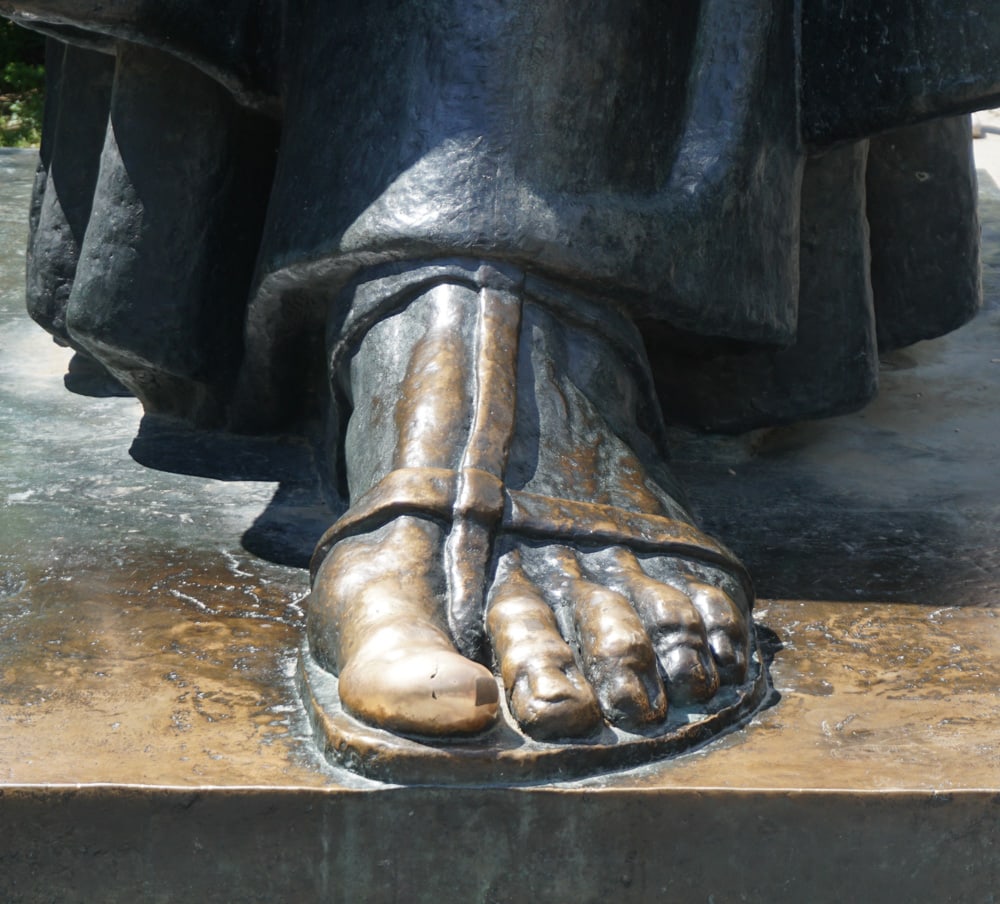
15. Do a Boat Tour of the Islands
There are many day trips from Split that are deserving of spots in your itinerary, but you definitely will not want to miss out on a boat tour of some of Croatia’s idyllic islands.
This very popular full day speedboat tour takes you to five top islands and includes entry to Croatia’s famous Blue Cave. You’ll have time to snorkel or swim in the stunning waters. You can either join a small group or splurge on a private tour. Book this tour now!
The Blue Cave is accessed via a smaller boat, and may or may not live up to the hype, depending on weather and water conditions. But the islands and beaches are stunning, making the trip worthwhile regardless.
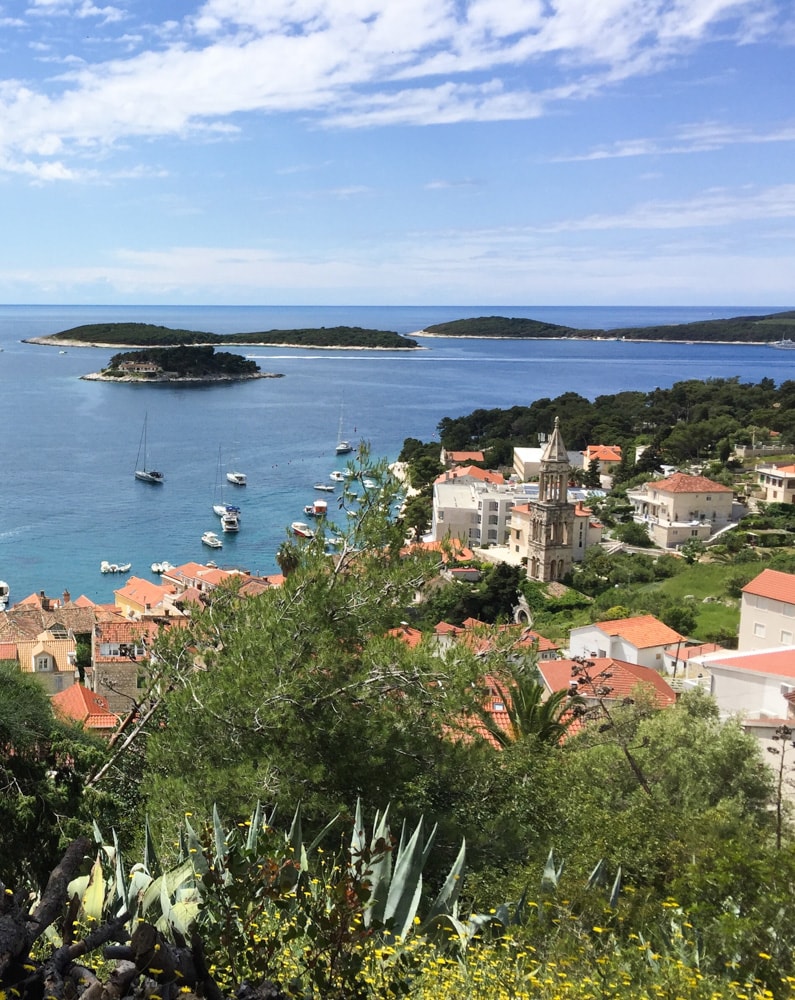
Hvar Old Town makes for a fabulous wander, and the fishing village of Komiza, on Vis Island, is charming.
If you only have half a day to spare, consider this highly-rated tour that includes the stunning little town of Trogir and the island of Šolta with swimming in the Blue Lagoon. Book this tour now!
16. Enjoy Beach Time at Kasjuni Beach
Much of Split’s waterfront is taken up by the harbor, so you’ll need to venture out a bit for good beaches. But if you visit in the summer, make the extra effort and catch some rays at one of Split’s beaches!
Kasjuni Beach can be accessed on foot, but the trek is over Marjan Hill, so you may want to take the local bus (#12) from the town, or use Uber.
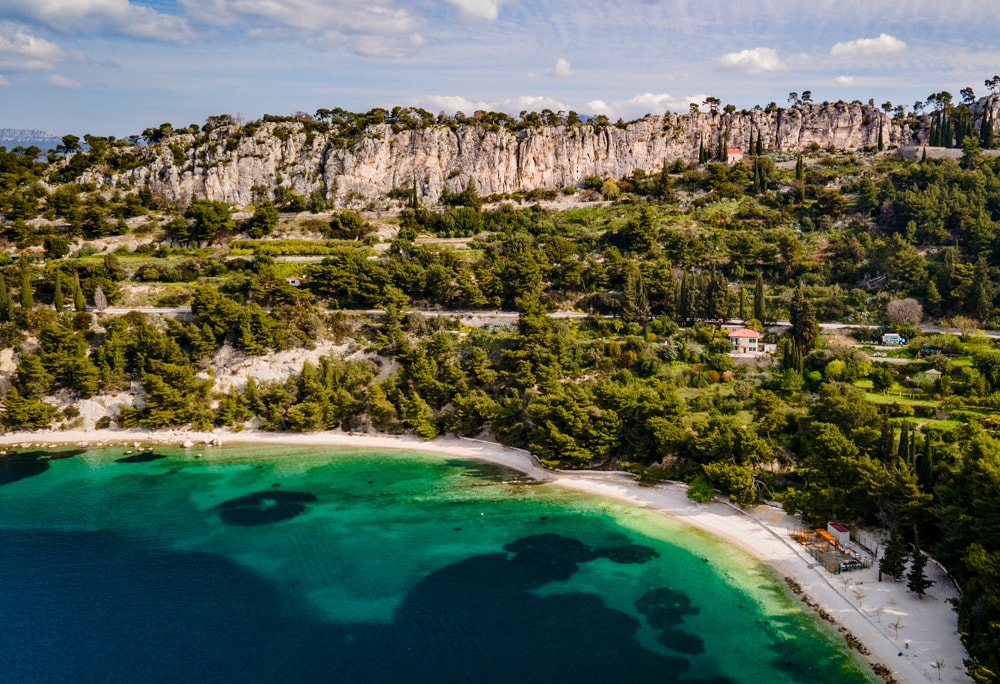
It’s an excellent beach for swimming and sunbathing. You can rent sun-beds. Showers and changing areas are available. There is a beach bar for food and drink, or you can bring a picnic.
Like most Croatian beaches, Kasjuni Beach is pebbly, so wear water shoes: they’ll also protect you from sea urchins. There are trees, so you’ll have some shade in the morning. Sniff the aroma of the pines!
Kasjuni Beach can get crowded in season, so if you plan to visit in the summer, arrive early. It’s also more peaceful in the morning.
Good to know: Bacvice Beach is easier to access, and sandy, so it tends to be packed during the season. It’s a beach to consider if you plan to visit Split in the outer fringes of the shoulder months.
17. Tour Klis Fortress
Located about 13 km (about 8 miles) from Split, the medieval Fortress of Klis is worth a visit if you have more than one day in Split.
You can drive to Klis Fortress if you have a car, join a guided tour, or take a public bus (#22, from the HNK stop across from the Croatian National Theatre) or Uber.
Situated on a high mountain ridge, Klis Fortress started out as a small fortification during Illyrian times. Later it served as a castle for Croatian kings, and was ultimately made into a defensive fortress against the Ottoman Turks.
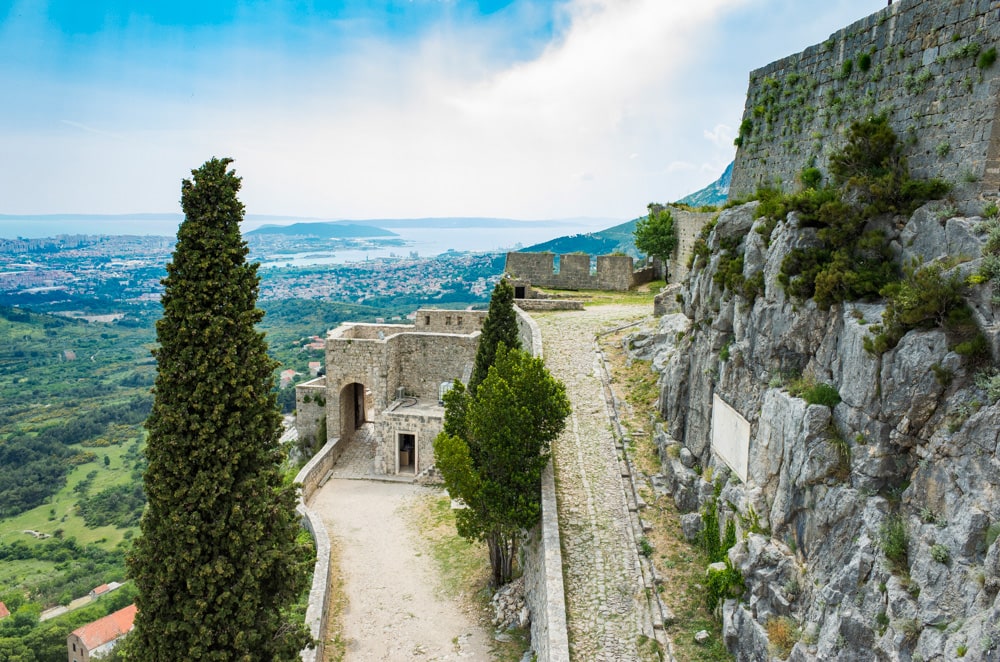
Game of Thrones fans will be excited to know that Klis Fortress served as the filming location for Meereen!
Klis Fortress offers spectacular views, not only over Split, but also towns like Salona, Solin, and Trogir, as well as islands in the sea. The current stone structure dates back to Venetian times. There is a small onsite museum.
Bring drinking water, and food and snacks if you anticipate needing to eat while you are there.
Want to visit on a guided tour? This highly-rated tour combines Klis Fortress with the towns of Salona and Trogir for a full day out from Split. Trogir is a UNESCO World Heritage site, and Salona is known for its Roman ruins.
Book this tour now!Game of Thrones fan? Check out this popular tour that takes you to filming locations in and around Split, including Klis Fortress and the cellars of Diocletian’s Palace.
Book this tour now!
18. Visit a Winery
If you enjoy wine, a tour of the Putalj Winery should definitely be on your Split itinerary! It is located just a short drive from Split, and the winery arranges transportation to and from a central point in town as part of the tour price.
The family-owned winery produces Zinfandel, Plavac Mali, and Rose wines, and the tour, hosted by the owners, garners rave reviews.

You’ll tour the vineyard, the production area, and the barrel room, and the owners offer lots of stories and information about the vineyard and the wines.
Tastings include all three wines produced by Putalj winery, along with tasting of the olive oil also produced onsite, and food pairings including cheeses and charcuterie. Wine tasting through the evening is unlimited and you get a bottle of your favorite wine to take with you.
Learn more about the tour here.
Where to Go on Day Trips from Split
Split is a great place from which to explore surrounding areas, so if you plan to spend a few days here, check out our detailed article on the best day trips from Split.
Here are our top suggestions, other than the boat tour to the islands we’ve already described above.
Krka National Park (and Sibenik)
One of the most visited national parks in Croatia, Krka National Park features wonderful waterfalls and many historical sites. You can visit the park on its own for the day, or combine a visit to Krka National Park with a stop in Sibenik, a charming historic coastal town.
We’ve written a detailed guide to Krka National Park, which you’ll want to read if you are planning a trip.
Skradinski buk is the most popular waterfall in the park. The longest of the waterfalls formed by the Krka River, Skradinski buk is actually a series of travertine waterfalls that creates the perfect picture postcard.
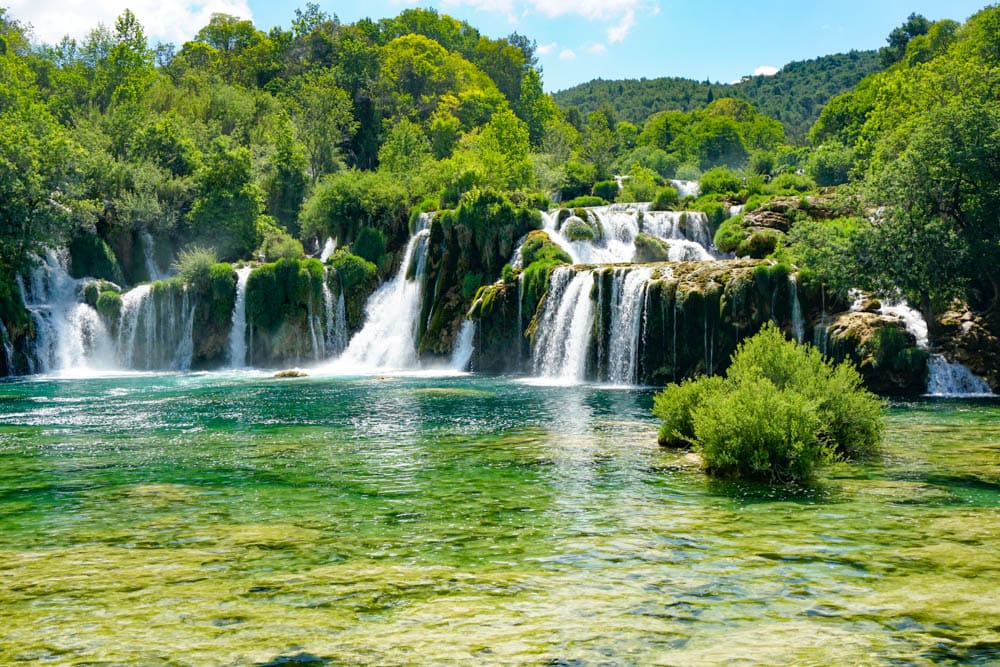
Walking the boardwalk trail to Skradinski buk is one of the top things to do in Krka National Park. Along the picturesque route, you’ll see a variety of wildflowers in season. There is also an ethno village to visit.
Other than Skradinski buk, Roski slap is another popular waterfall you’ll want to visit. The viewpoint overlooking Visovac Island is a must-stop spot for photographers.
In Sibenik, visit the Cathedral of Saint James, an imposing UNESCO World Heritage site, and wander the alleys of the historic town. Take in the views from St. Michael’s Fortress, one of Sibenik’s four forts.
Want to visit on a guided tour? This highly-rated full day tour from Split includes a tour of Sibenik (with commentary on the Cathedral of St. James), three hours in Krka National Park, plus a boat ride to Skradin, where you will enjoy wine tasting.
Book this tour now!
Cetina River Rafting
Adventure-seeking visitors to Split will want to head to the Cetina River and Canyon for a variety of thrilling adventures, from ziplining and canyoning to rafting and canoeing.
The Cetina River is a 65-mile-long stunning blue-green river that flows into the Adriatic Sea near the town of Omis. Its canyon features dramatic cliffs and beautiful waterfalls. Its source, the Eye of the Earth spring, is a gorgeous spot as well.
There are many choices when it comes to guided Cetina River adventures.
This highly-rated guided half-day rafting tour includes transport to and from Split and is a fun option for beginners and non-swimmers. Swimming, cliff jumping, and exploring a cave along the route are optional. The scenery is spectacular!
Book this tour now!
Hvar Island
Hvar is one of the best places to visit in Croatia. The island is gorgeous, and easy to access from Split on a day trip, whether you do it independently by ferry or you join a guided tour.
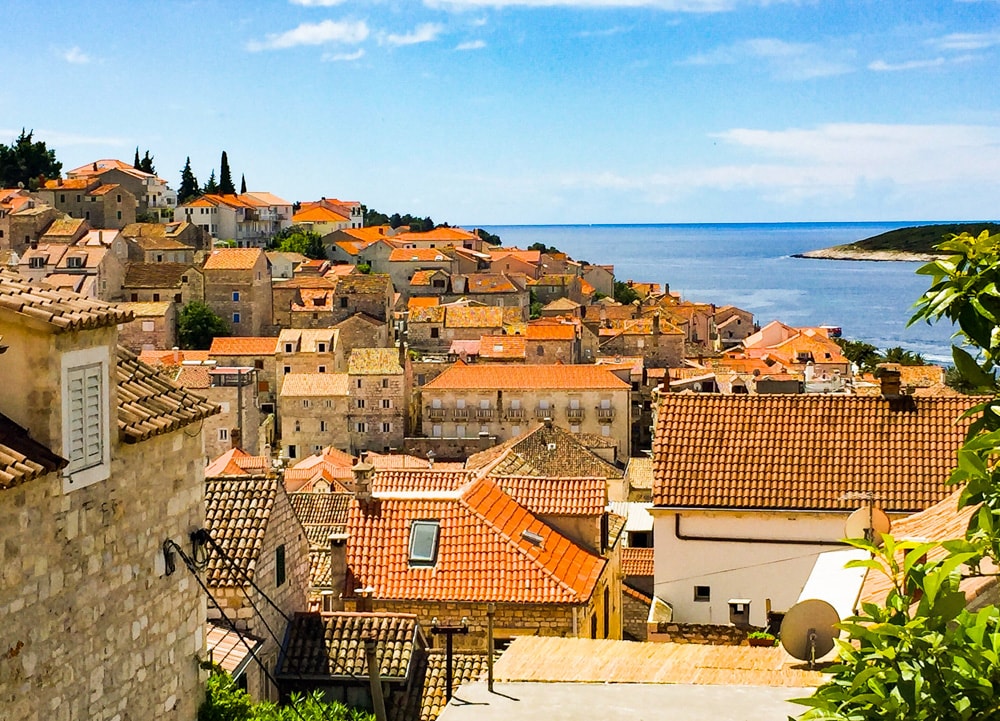
Hvar Town is where you’ll disembark on the island if you take the passenger ferry from Split. While there’s plenty in Hvar Town to keep you engaged for the day, you can also rent scooters or take the bus to visit Stari Grad as well.
In Hvar Town, hike to the top of the Spanish Fortress for stunning views over the rooftops of Hvar Town, the sea, and the Pakleni Islands. On a clear day, the views are simply breathtaking.
Stroll Saint Stephen’s Square, visit St. Stephen’s Cathedral, and wander the beautiful alleys of Hvar Town. Walking the waterfront is fun as well.
Stari Grad (Old Town) is quieter than Hvar Town, but no less beautiful. Wander the narrow streets and alleys and walk the picturesque waterfront. Visit St. Stephen’s Church and climb Glavica Hill for views.
Guided tours usually combine Hvar with the Blue Cave and other islands, and are a great option if you are in the region for a short time.
This super popular tour allows you some time to explore Hvar Town, while also taking you to other beautiful islands like Vis and Budikovac. Book this tour now!
Or consider this full-day tour of Hvar, Brac, and the Pakleni Islands by catamaran. You’ll have the option to swim in pristine bays around Brac Island and the Pakleni Islands. In Hvar Town, see the major sights with a guide, then spend some time exploring the town on your own. Food and drinks are included.
Book this tour now!
Plitvice Lakes National Park
Croatia’s most well-known national park, Plitvice Lakes National Park should definitely feature on your Croatia itinerary. We suggest overnighting for the best experience, but if your itinerary only allows for a day trip, you should still go!
Plitvice Lakes National Park, a UNESCO World Heritage site, is a network of 16 interconnected lakes, with hundreds of waterfalls and cascades, both large and small. You have to absolutely experience its beauty in person!
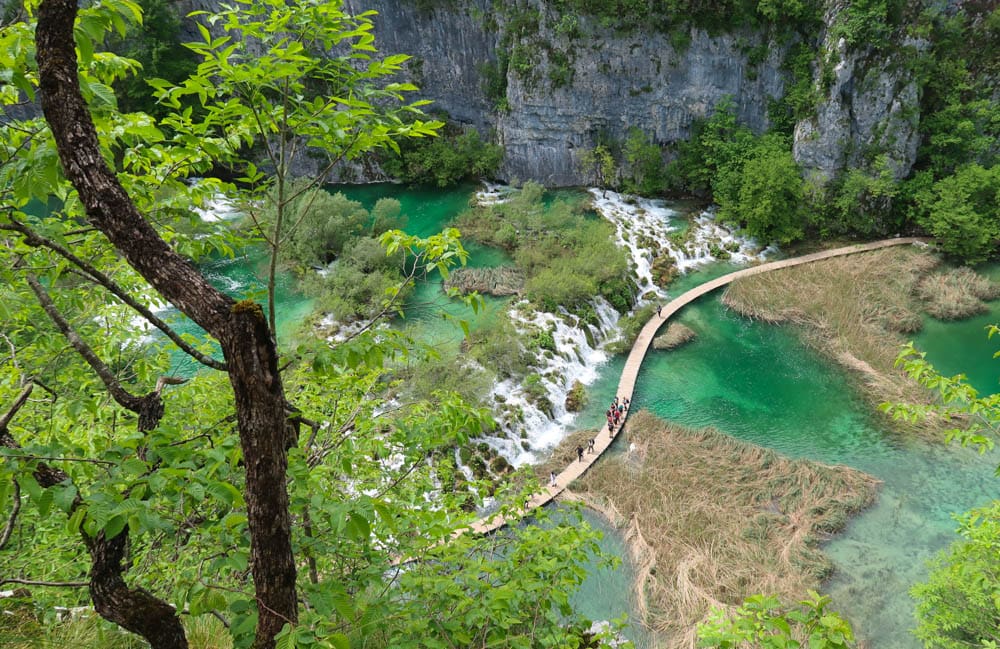
If you plan to visit during the peak summer season on your own, arrive as early in the day as possible: opening time, if you can manage the early wake-up call on vacation. The park is least crowded early and late in the day.
It takes a few hours to walk the longest routes through the park. You’ll explore the park on foot, walking boardwalk trails over the water and dirt trails along the shores of the lakes. There’s also a boat ride you can take from the upper to the lower set of lakes.
Plitvice Lakes National Park is located about 242 km (150 miles) from Split. If you have a car, it will take you about 2.5 hours each way.
If you’d like to join a guided tour, this highly-rated full-day tour from Split offers air-conditioned transport from Split and back, and allows you the chance to explore the park at a non-rushed pace.
Book this tour now!
Mostar and Kravica Waterfall
Mostar is a beautiful and historic town in neighboring Bosnia and Herzegovina. Visiting Mostar on a day trip from Split makes for a long day, but it’s very worthwhile if you cannot afford more time.
Stari Most, Mostar’s Old Bridge is hugely popular on Instagram. The super picturesque bridge spans the Neretva River and is designated a UNESCO World Heritage site. It was destroyed in the 1990s war and rebuilt to look like the original.
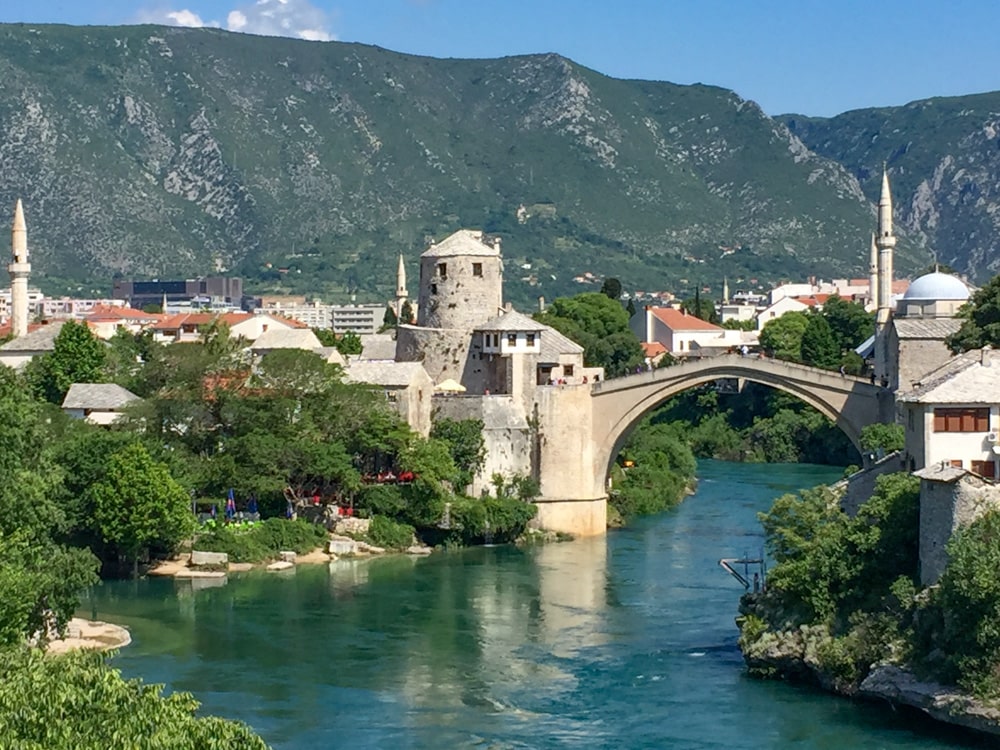
Also walk down to the banks of the river near the Stari Most to watch local divers plunge into the cold waters! The views of the bridge from the banks are also beautiful.
The town’s architecture is stunning, with the minarets of mosques soaring up into the sky, and old Turkish houses. As you wander Mostar’s cobblestoned alleys, you’ll find yourself stopping often to snap photos.
Along with Mostar, take in the beauty of Kravica Waterfall, and visit the UNESCO World Heritage site of Počitelj, a historic village located in the cliffs overlooking the Neretva River.
A guided tour is a hassle-free way to do this trip. This popular tour from Split takes you to all three places we’ve described above. You’ll have a local guide in Mostar, critical for learning about its history.
Book this tour now!
Getting to Split
By Air
Split is the second-largest city in Croatia, after the capital, Zagreb. It has an international airport, making it easy to fly into the city from other places in Europe, as well as other parts of the world.
Split Airport is also called Resnik Airport, and it is located about 19 km (a little under 12 miles) from the city center. From the airport, you can take a taxi or an Uber to your accommodation. If you do not have much luggage, you can also take the local bus into town.
You can also pre-book a transfer from the airport into town (a door to door service in an air-conditioned vehicle) or vice versa.
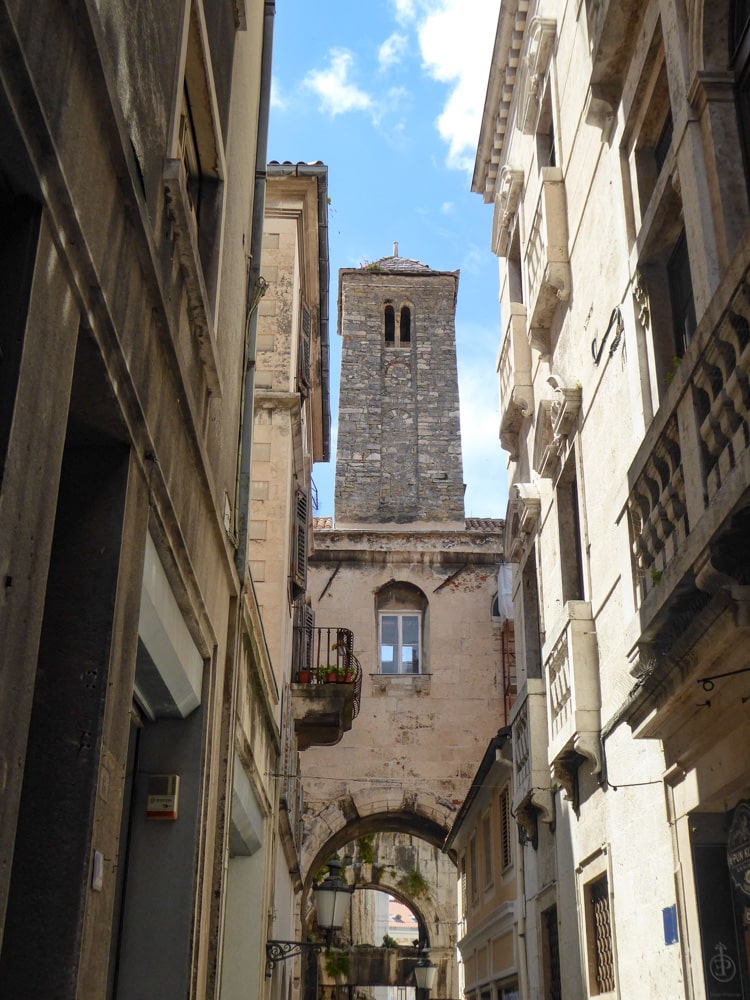
By Bus
Split is well connected by bus to other parts of Croatia, including Dubrovnik, Zagreb, and Zadar. Buses are the common mode of public transport in the country as opposed to trains.
We pre-book our Europe train and bus tickets on Omio. The site is in English, and a breeze to navigate. If you plan to book bus tickets for Split ahead of your visit, try Omio!
By Car
Croatia is a wonderful country for a road trip. Roads are well-maintained and well-signed, making it a pleasure to tour the country in a car.
Split’s Old Town is a pedestrian-only area, so if you plan to stay inside the Old Town, you’ll need to find parking. While there is free parking on the fringes of town, we suggest a paid garage.
If you plan to stay outside the Old Town, look for accommodation that comes with free parking.
Renting a car for your Croatia trip? Discover Cars offers you the ability to compare availability and prices across many major car-hire companies. Pick the car that best meets your needs!
Book you rental car with Discover Cars now!

By Ferry
If you are traveling to Split from other places along the coast, the ferry is an option in season. There are several companies that offers ferry services to and from Split, and both car ferries and passenger ferries are offered.
The ferry port is located walking distance from the Old Town. You disembark from the ferry and get onto the Riva, which leads to Diocletian’s Palace and the Old Town.
By Cruise Ship
Split is a cruise ship port, so you can arrive in Split on a cruise ship as well. The cruise ship port is located not too far from the Old Town: walking distances range from 0.5 mile to 0.7 mile.
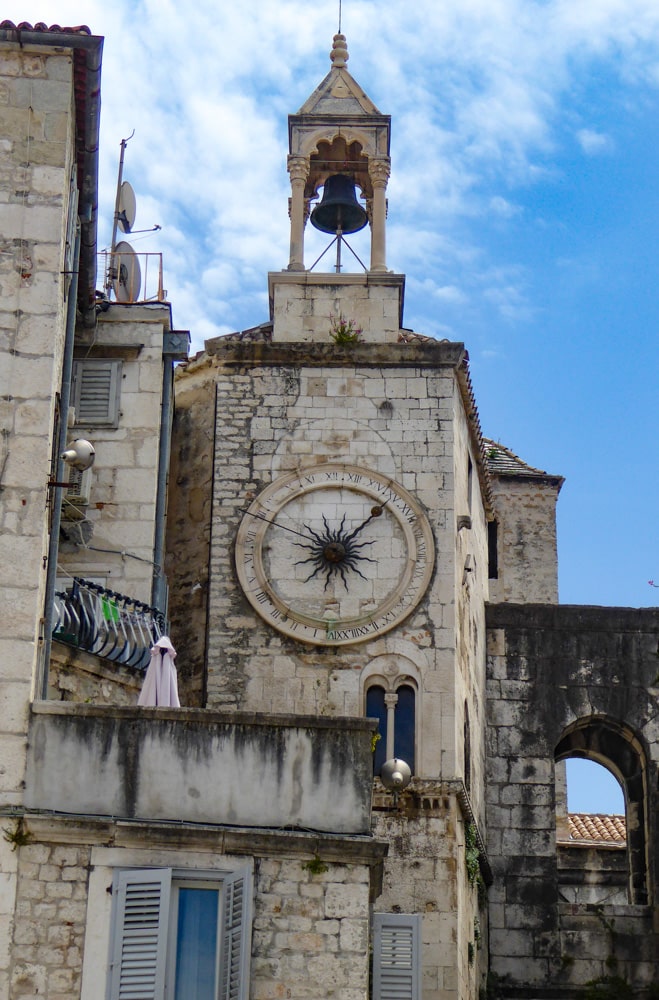
Getting Around in Split
Split’s Old Town is eminently walkable, so you should be able to walk to all the landmarks in the Old Town.
Split’s main bus station and ferry port are also located walking distance from the Old Town, convenient if you plan to do day trips using public transport, or if you plan to visit places like the Klis Fortress independently and do not have a car.
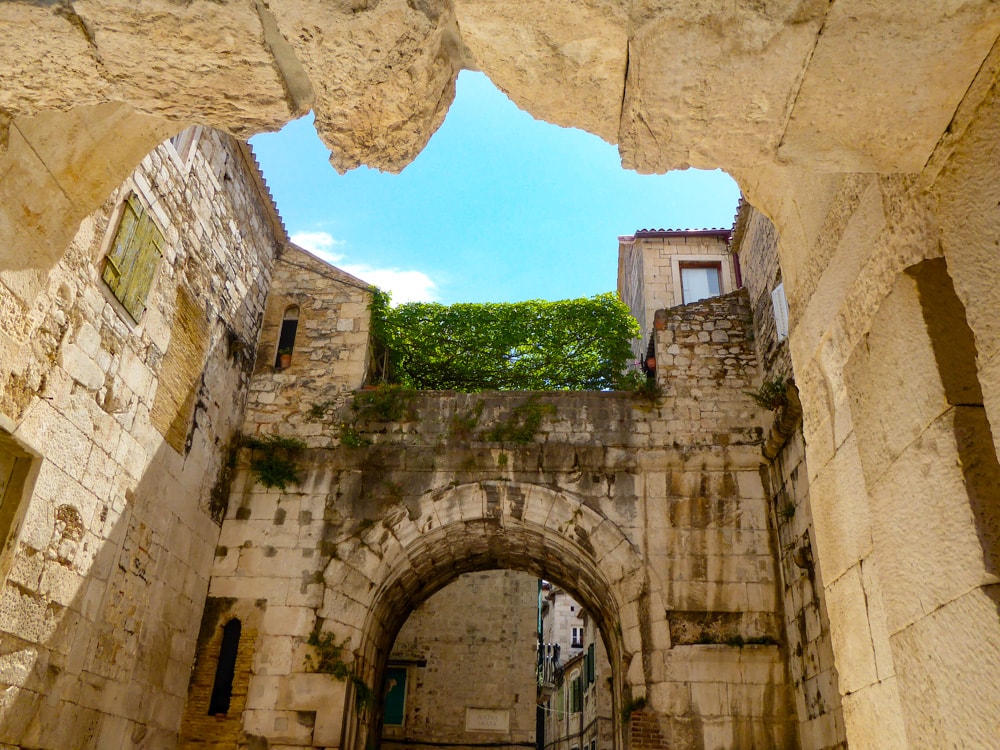
Where to Stay in Split
Hotel Murum has an enviable location inside Diocletian’s Palace. It’s a small hotel housed in a historic building, but has been carefully restored to preserve the antique appearance (think exposed brick walls!) while offering modern comforts. Breakfast here is rated very highly.
Book a stay here!
Judita Palace Heritage Hotel is located on Narodni Trg, just outside Diocletian’s Palace. Housed in a 16th century palace, rooms here feature exposed brick walls and upscale furnishings. The courtyard downstairs has a bar and restaurant.
Book a stay here!
Piazza Heritage Hotel is also located on the main square in Split, just outside Diocletian’s Palace. It is housed in a gorgeous Art Nouveau palace, and rooms are decorated elegantly in Art Nouveau style as well. Some rooms feature views of the square.
Book a stay here!
Spalato Luxury Rooms are located in the Old Town. Rooms are spacious and comfortable, and located close to shopping and dining. Ensuite bathrooms feature good showers.
Book a stay here!
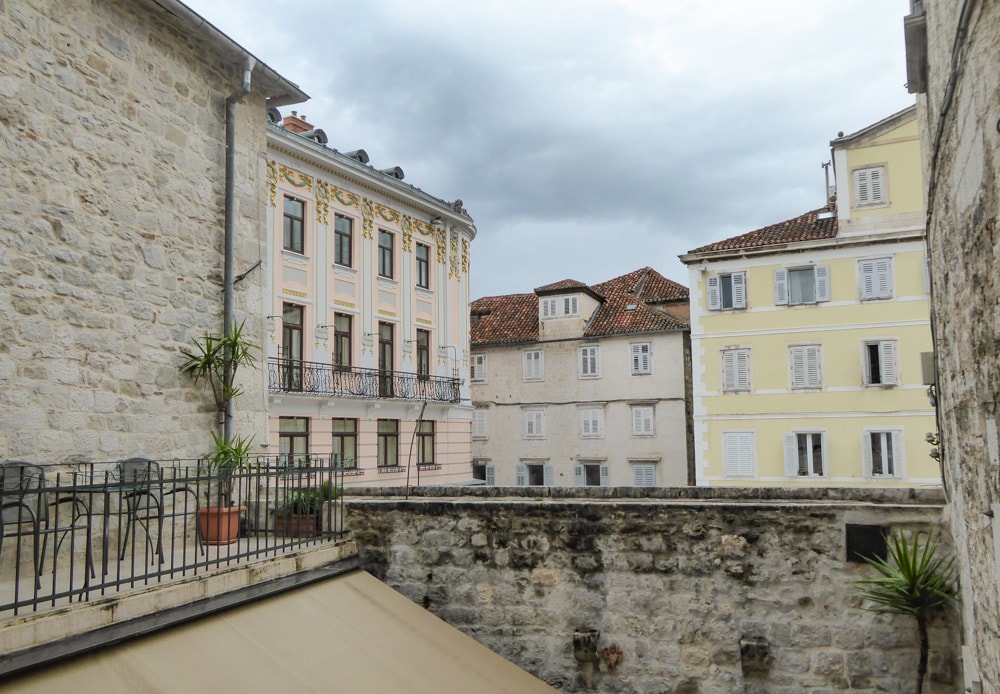
Where to Eat in Split
Fig Split offers international fare using local ingredients, with plenty of vegetarian options. It is located in the heart of Diocletian’s Palace. Try the fig and farm cheese flatbread (yum!). The burger was good too.
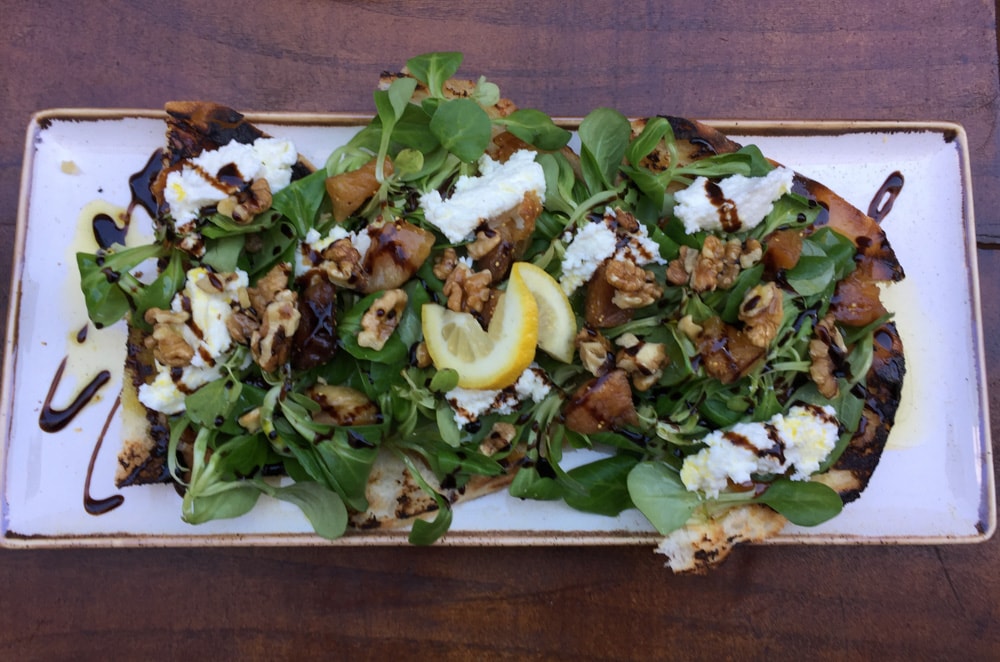
Konoba Matoni features Dalmatian cuisine with a modern twist. It has vegetarian and vegan choices. The seafood is fresh and flavorful. The truffle pasta is delicious. We ate here twice and both meals were superb. The restaurant is about a 10-minute walk from Diocletian’s Palace.
Zinfandel Food and Wine Bar has a menu that changes with the season. Also offering Dalmatian dishes with a modern flair, the bar is open for both lunch and dinner. You can also visit for wine, with or without a food platter. Both seafood and steak here were delicious. The bar is located a couple of minutes walk from Diocletian’s Palace.
Uje Oil Bar is located in the heart of the historic center and is open for both lunch and dinner. Try the catch of the day: your server may even filet the fish at the table!
Desserts and Sweet Treats in Split
Konoba Nikola is located in Stobrec so it takes some effort to get here. But it’s worth the effort if you are a fish fan, because it’s considered a fabulous fish restaurant. Try the multi-course menu featuring fresh fish from the day: you won’t want for choice!
For gelato, try Luka Ice Cream & Cakes, or Pumparela Gelateria. Luka is located about a 7-minute walk from Diocletian’s Palace, but the ice cream and cakes are definitely worth the short walk. Pumparela is located right by the Peristyle, so we stopped by almost every day we were in Split!
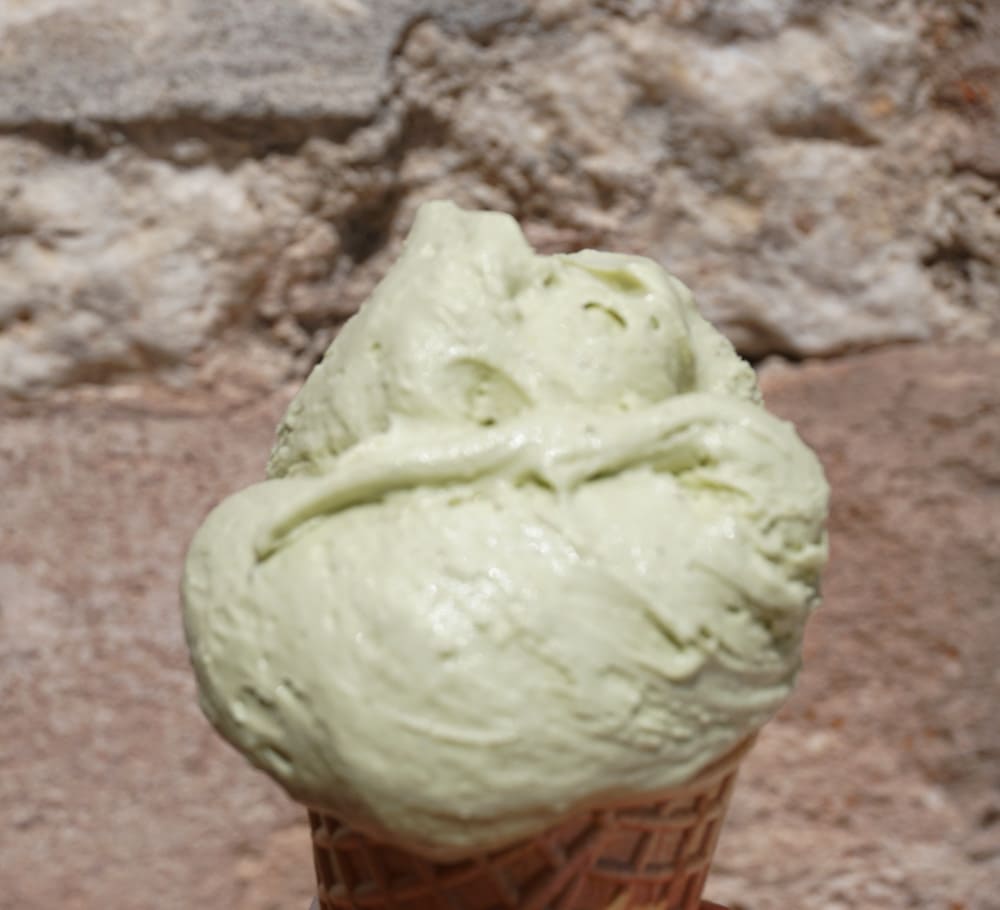
O’š kolač is located a short walk from Diocletian’s Palace and is a must-visit if you enjoy sweet treats. The cakes and pastries here are addictive! The 5-layer chocolate cake was our favorite, but if you aren’t a fan of chocolate, you’ll find other pastries from which to pick.
The Best Time to Visit Split, Croatia
The shoulder seasons of late spring (May to mid-June) and early fall (September to mid-October) are the best times to visit Split. During these times, you’ll encounter fewer crowds of tourists and you may be able to get lower prices on accommodations.
It’s still warm enough to swim in the sea in September and October, and water temperatures in the late spring are in the 60s and low 70s as well, making it generally possible to take a dip.
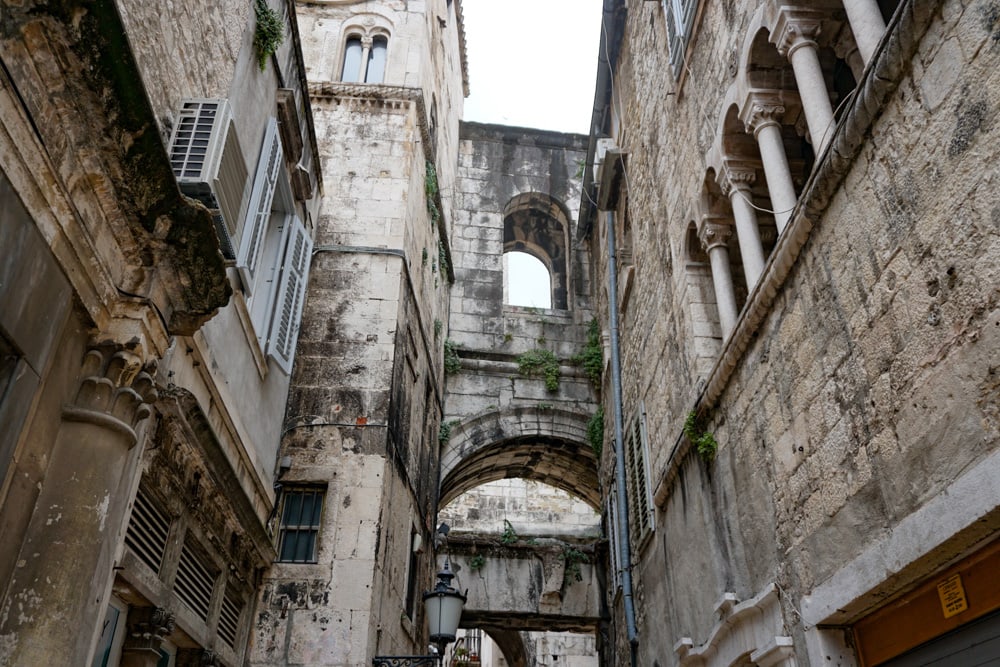
While ferries have better schedules in the summer, and it’s also peak beach season, know that Split is extremely popular in the summer. It is also a cruise ship port, which adds to the tourist population during the day on dates that ships dock here.
The low season, from November until April, is actually not a bad time to visit Split if you are okay with no swimming or sunbathing and you are not looking to visit the islands. Bring layers, and explore Split’s attractions in relative peace and quiet. Prices on accommodation are great too!
More Croatia Travel Inspiration
Planning a visit to Croatia? We have an in-depth 10 day Croatia itinerary to help you plan your first visit!
If you are looking to explore just the scenic coast, we also have a Croatian coast itinerary you can follow.
Our 2-day Dubrovnik itinerary is ideal for your first visit, but we would happily repeat it on subsequent visits as well.
Also be sure to check out our guide to the best day trips from Split, including the historic town of Trogir.
And if you like picturesque coastal towns, be sure to read our guide to Rovinj, located on the Istrian coast.
We also have a compilation of the best things to do in Zadar — the old town is so beautiful! And a guide to the best day trips from Zadar, including to Krka National Park.
Also discover our one-day guide to Zagreb, the capital city, and our round-up of the best day trips from Zagreb, including Plitvice National Park and the beautiful Baroque town of Varazdin.
If you enjoy nature, we also have a round-up of the eight national parks in Croatia, with tips on how to visit each park.
Did you find this article informative? Pin it for later reference!
